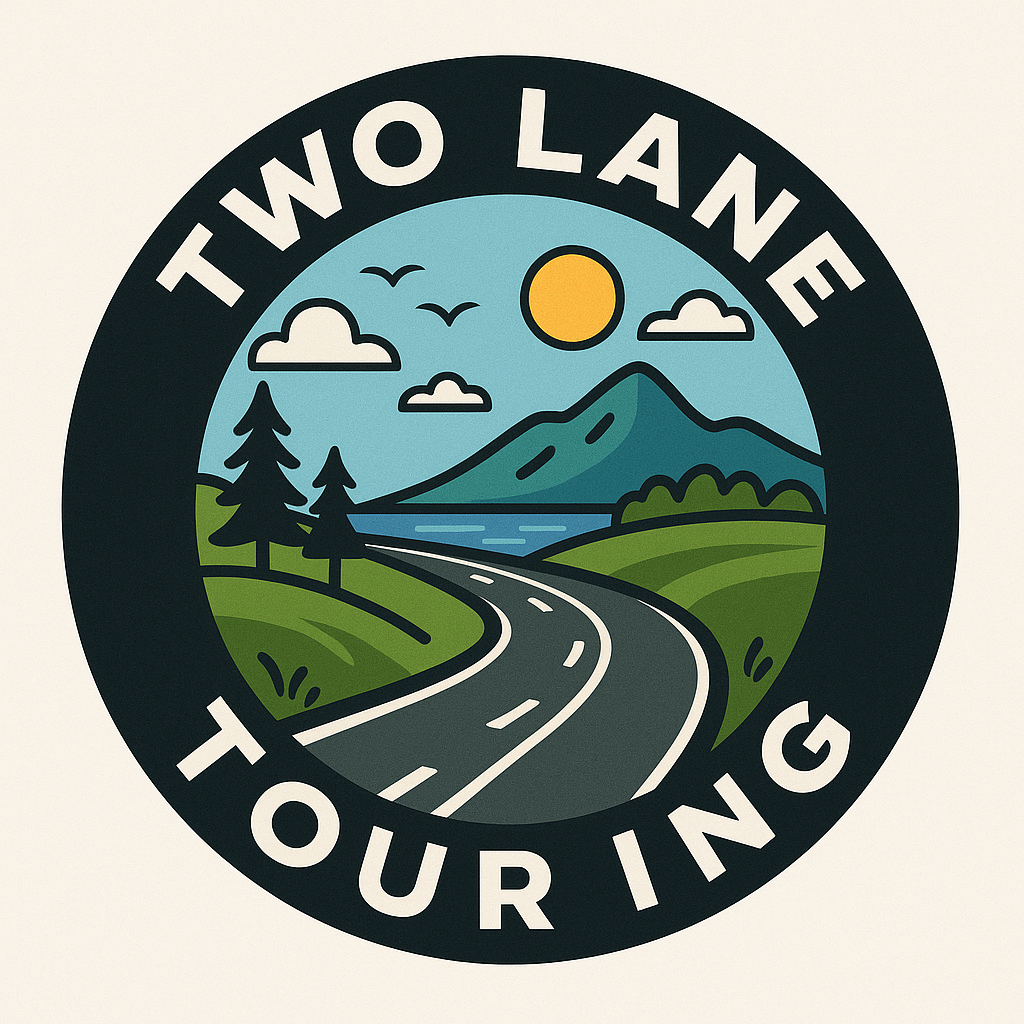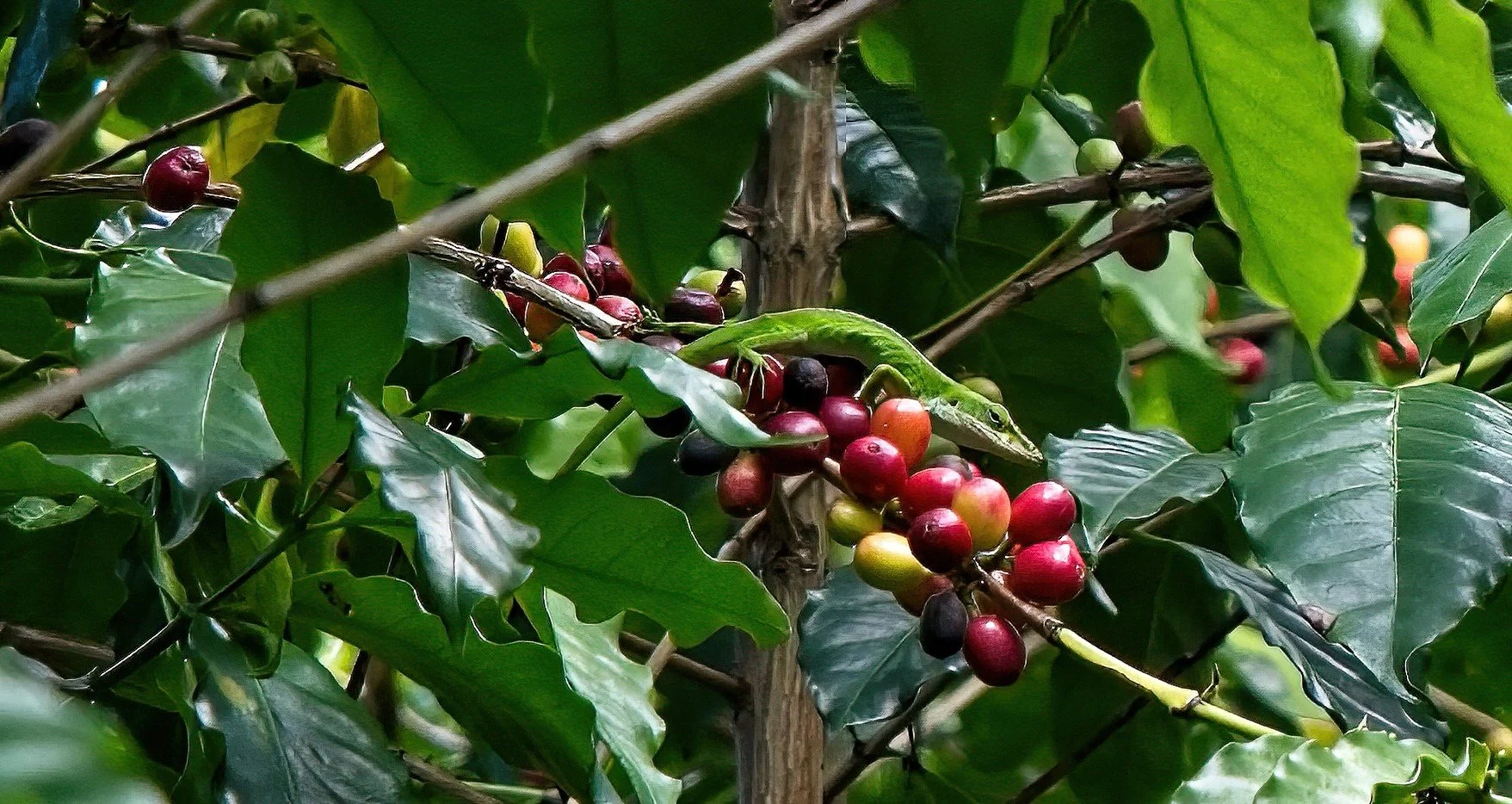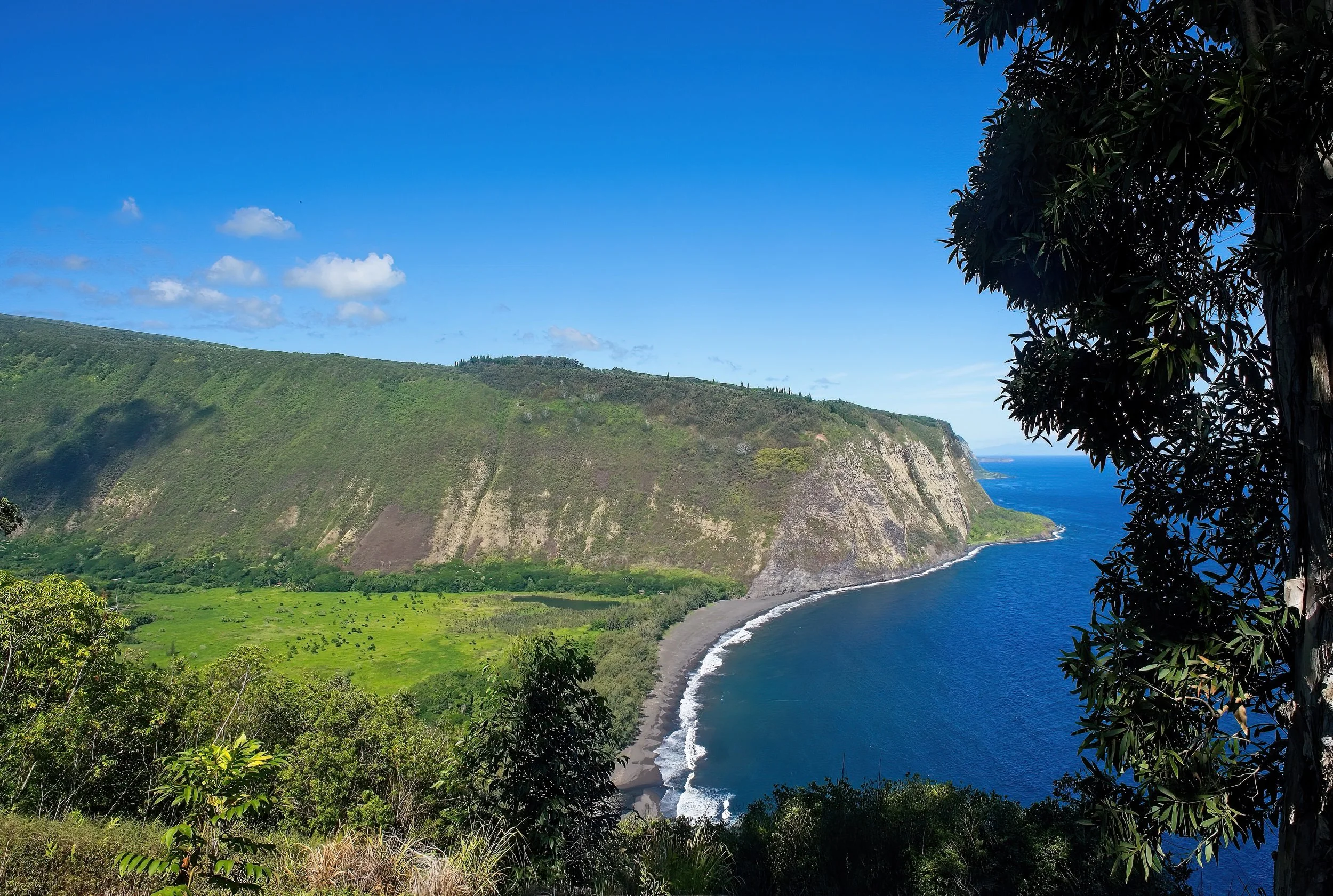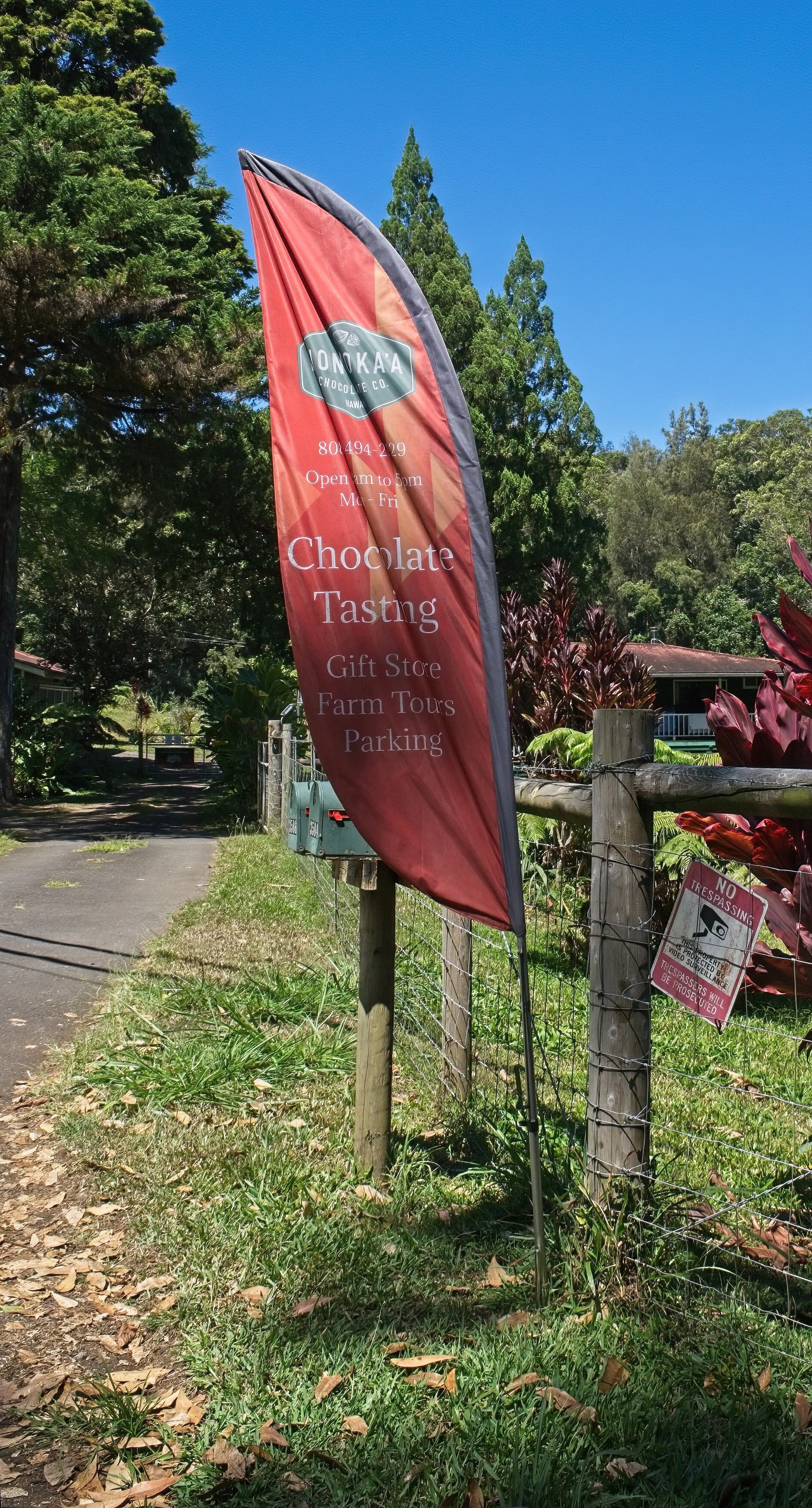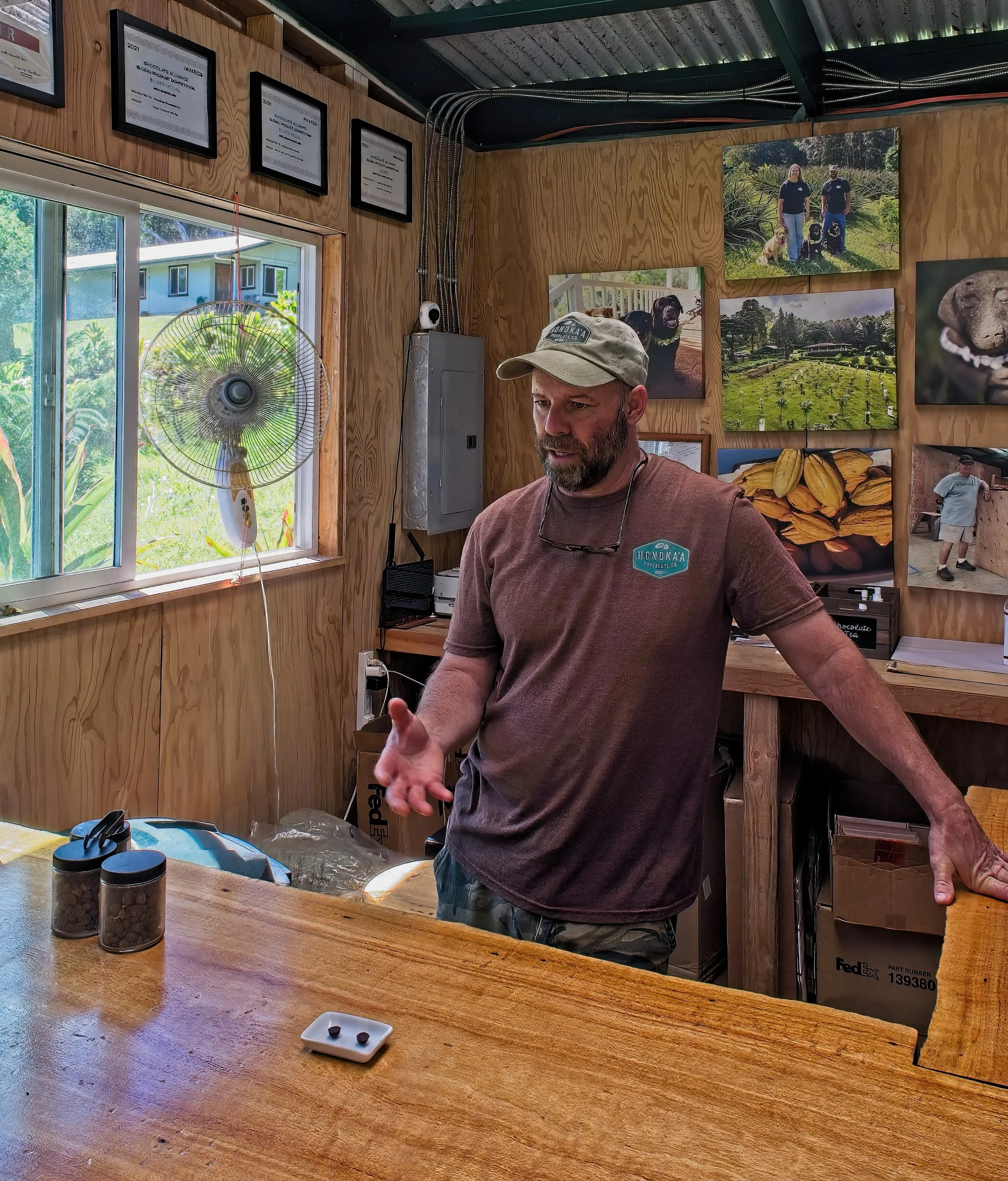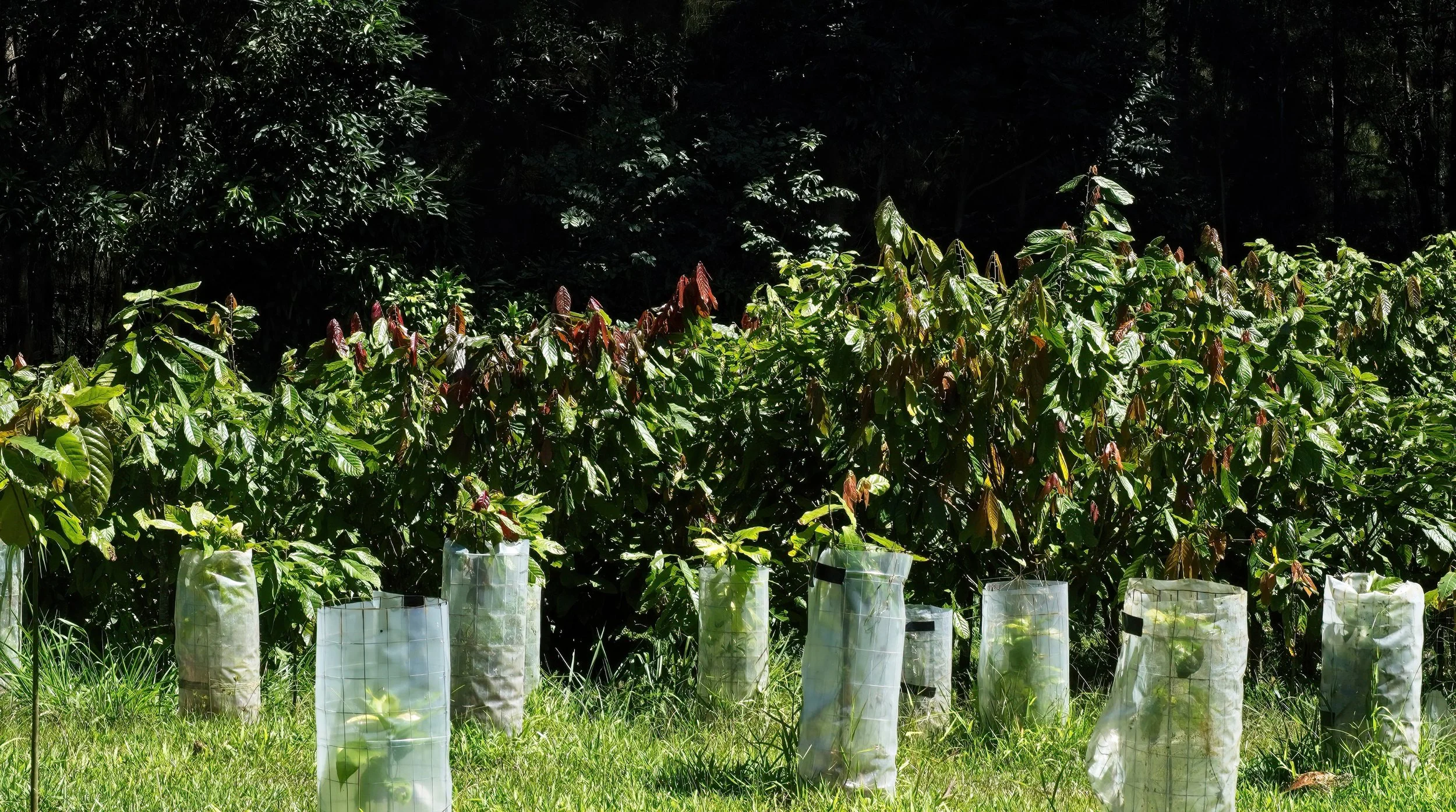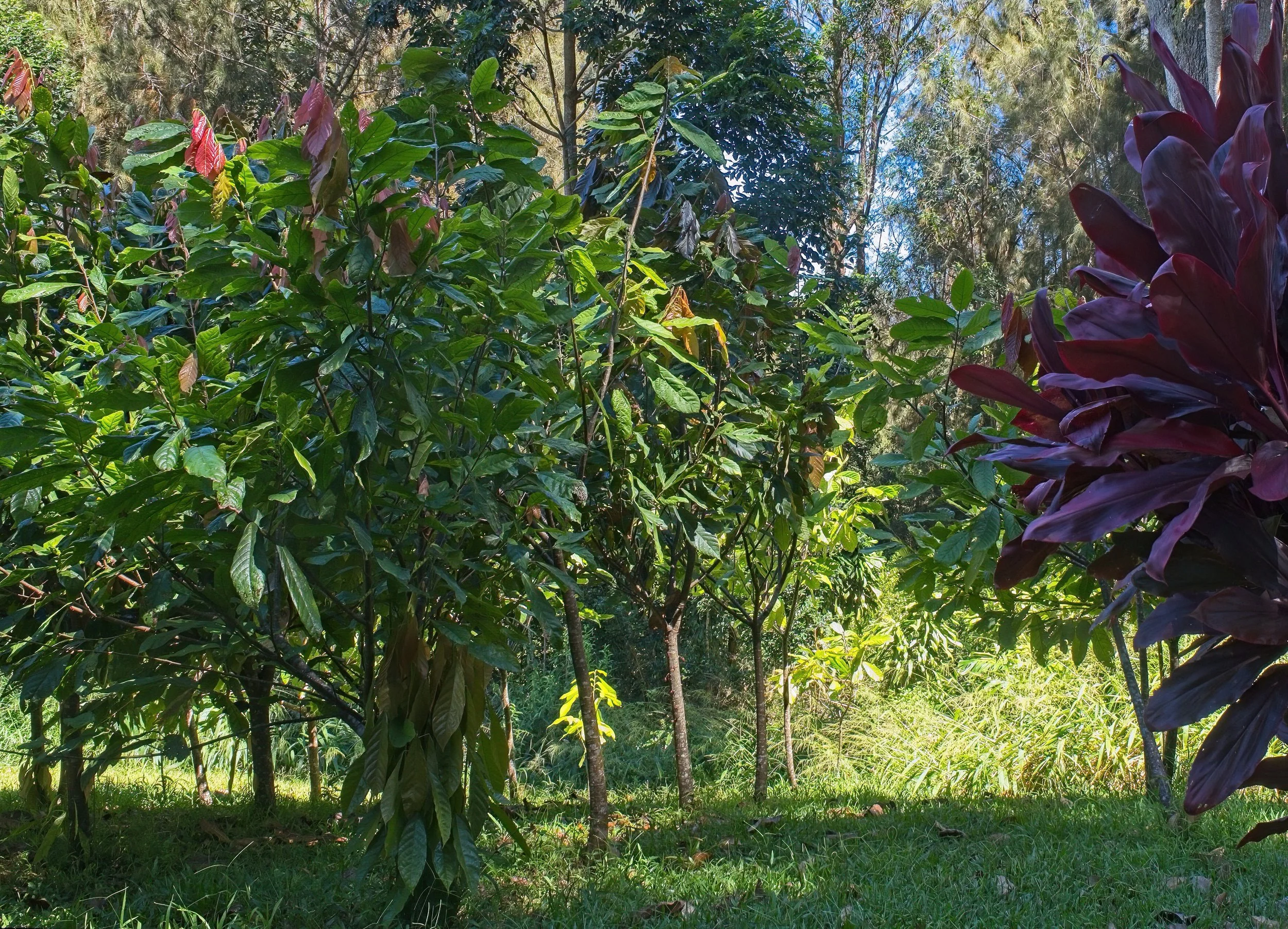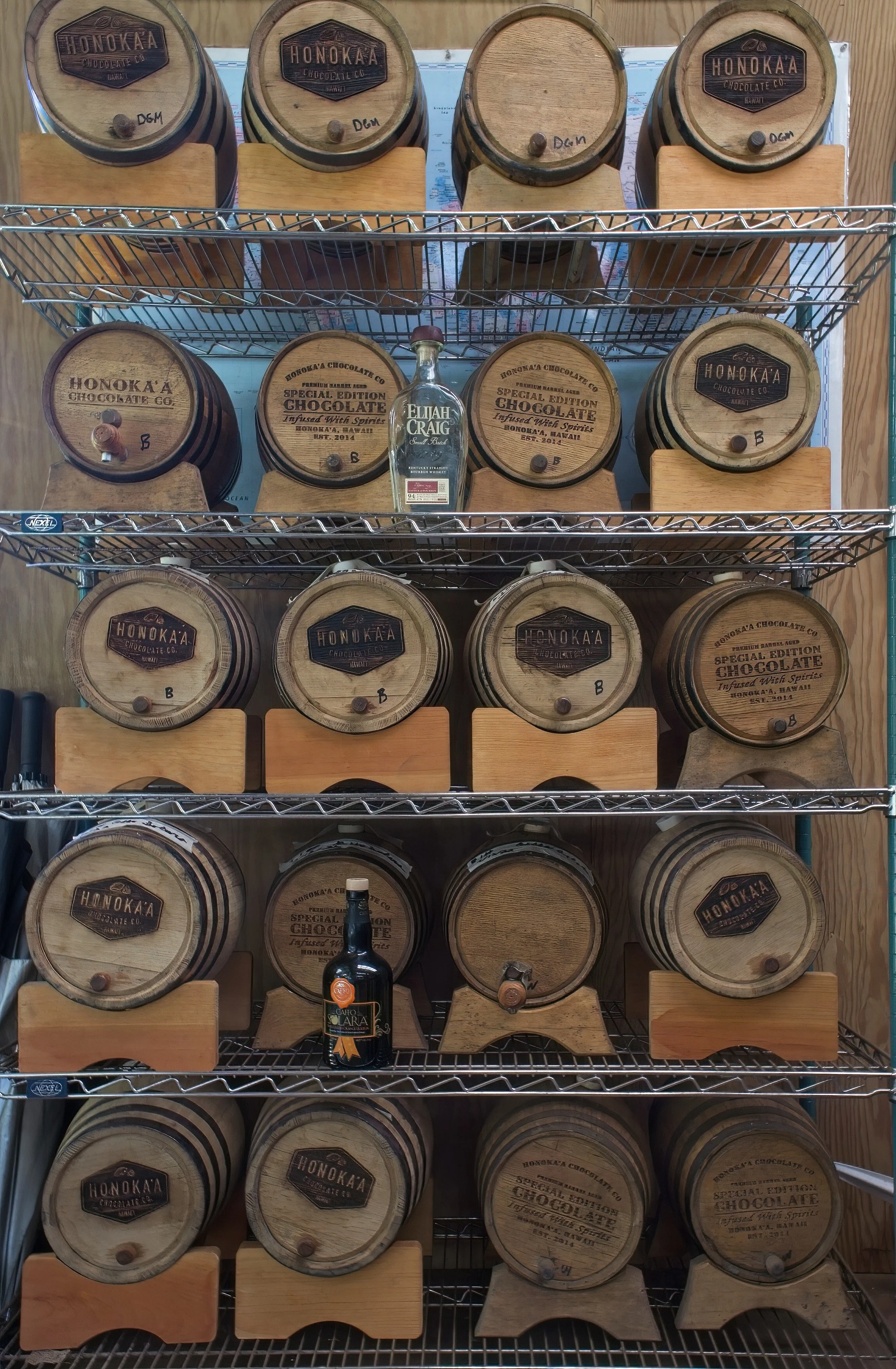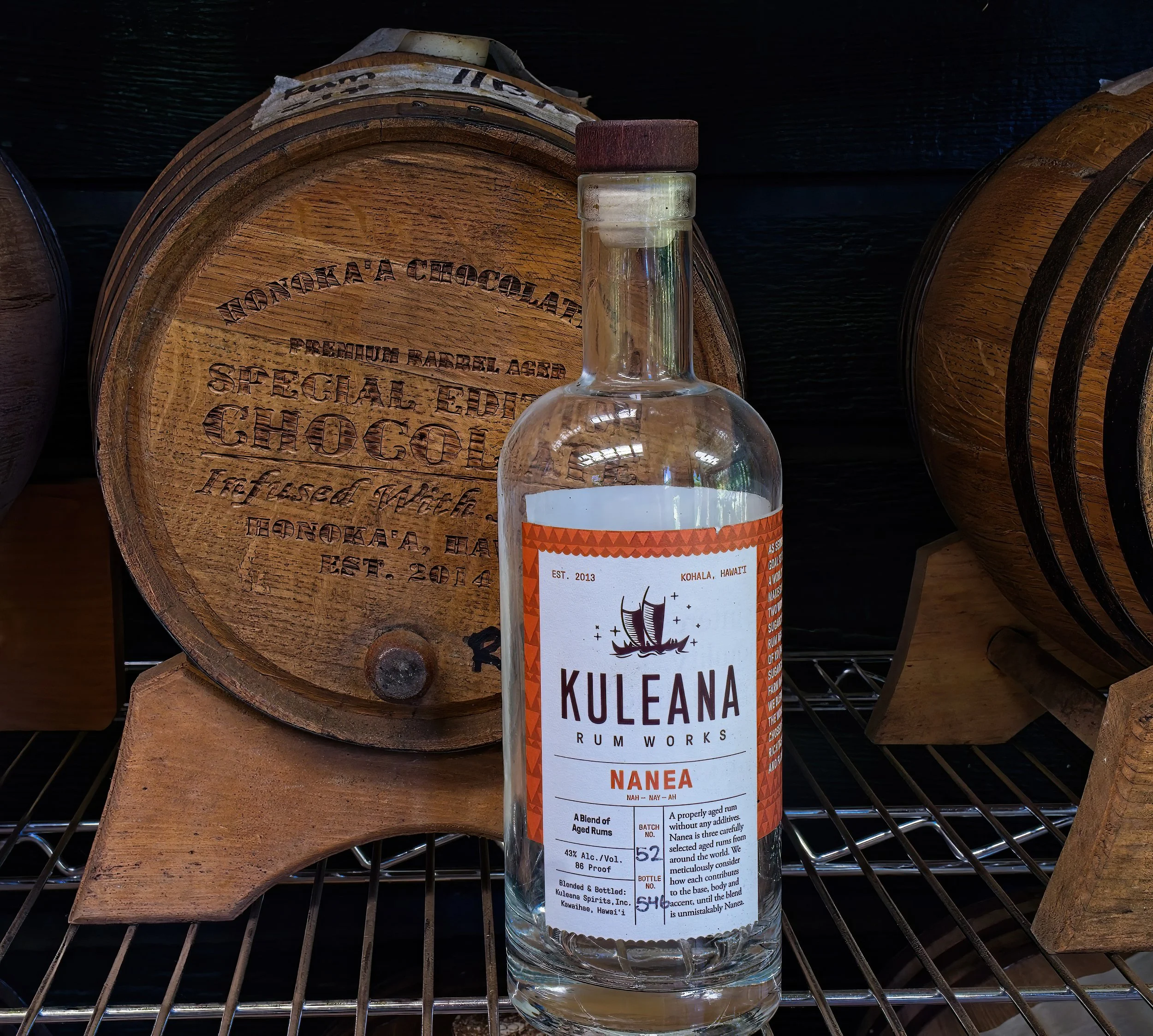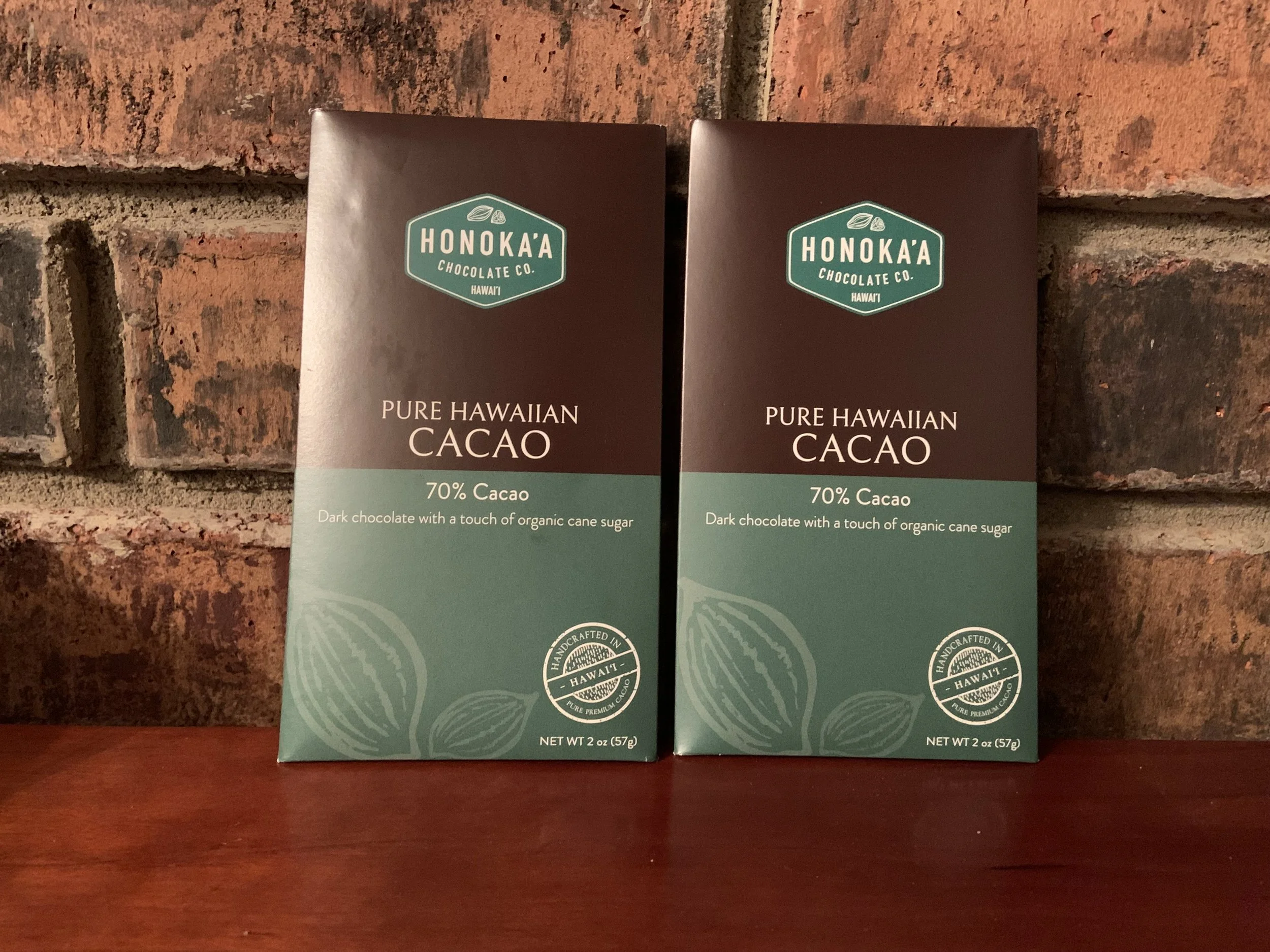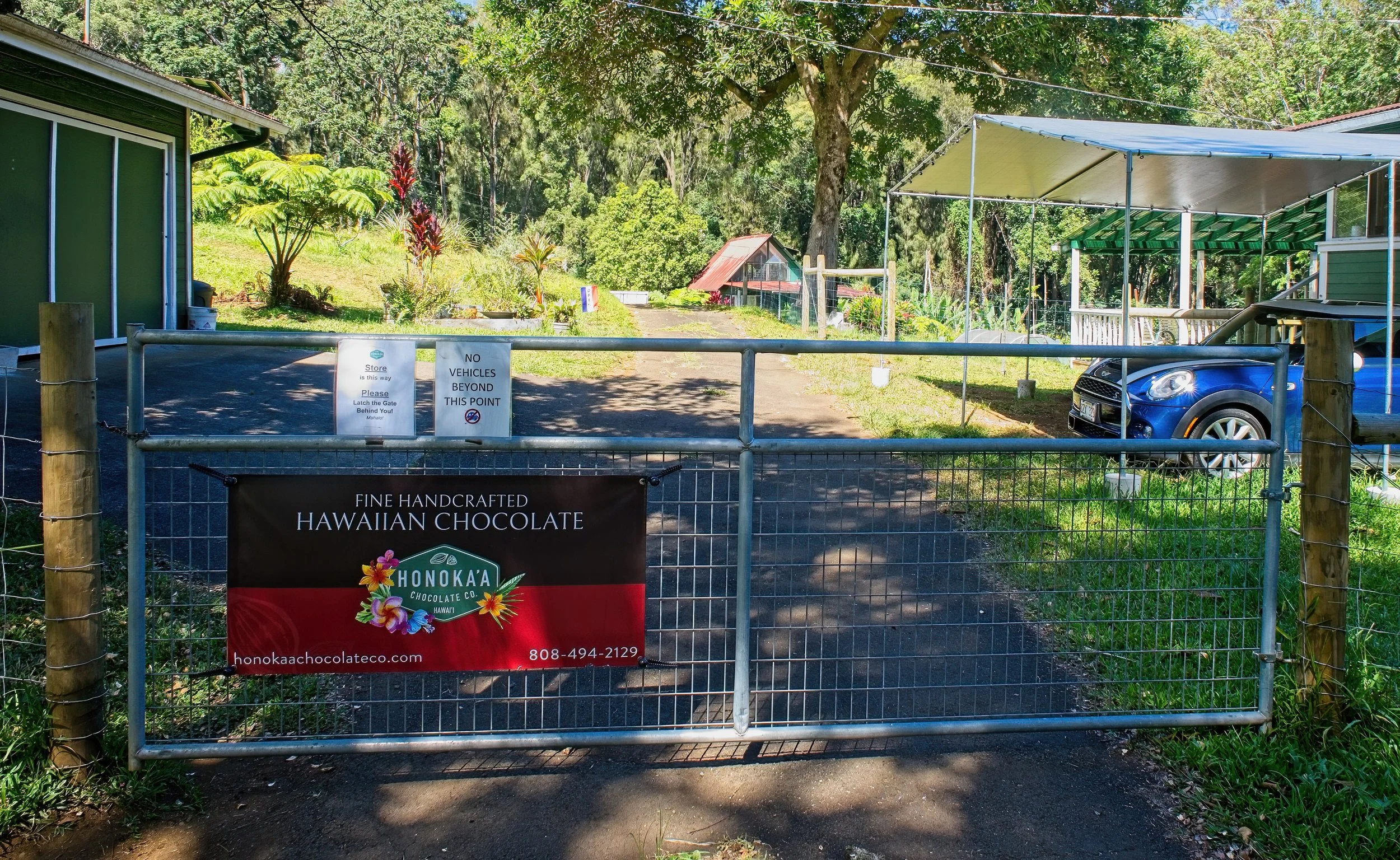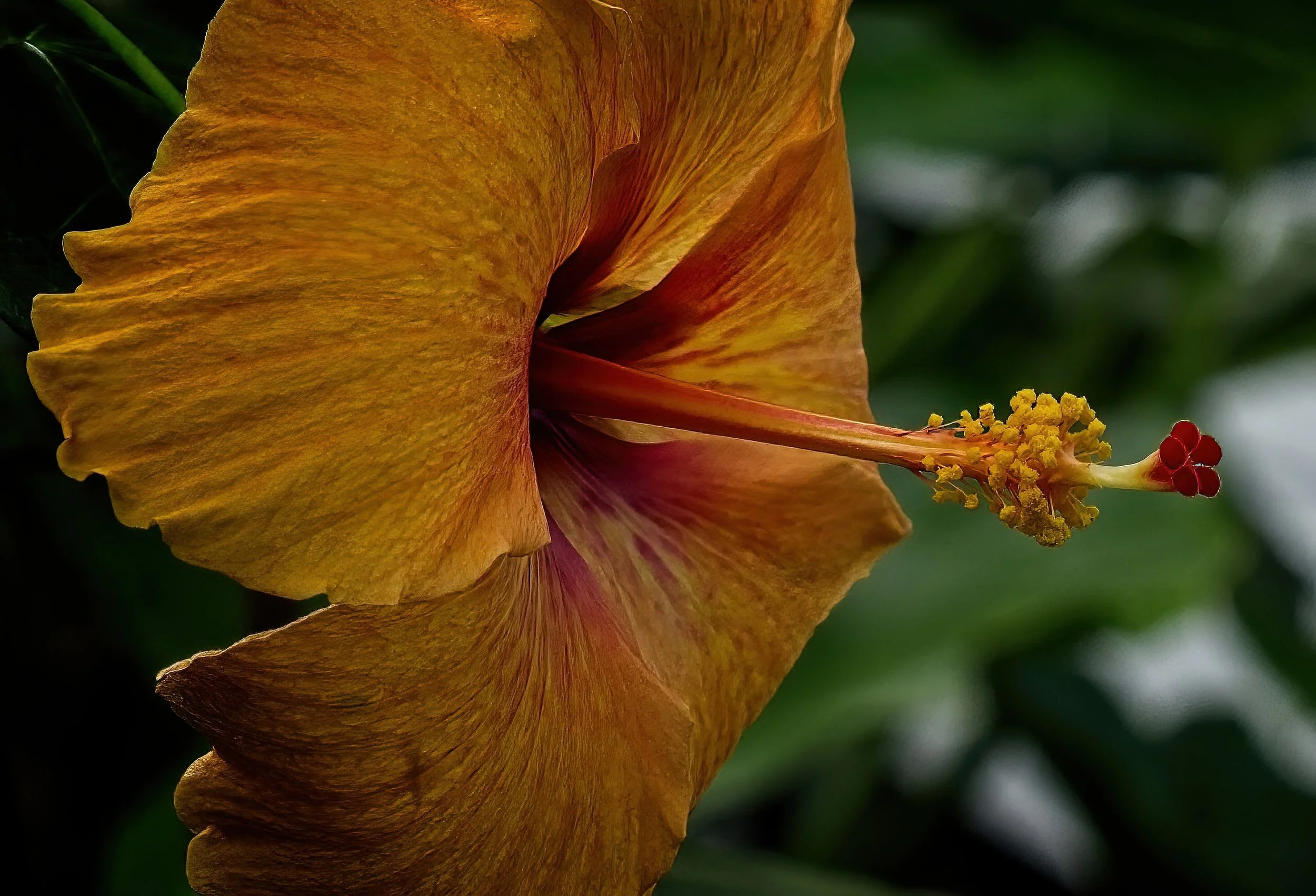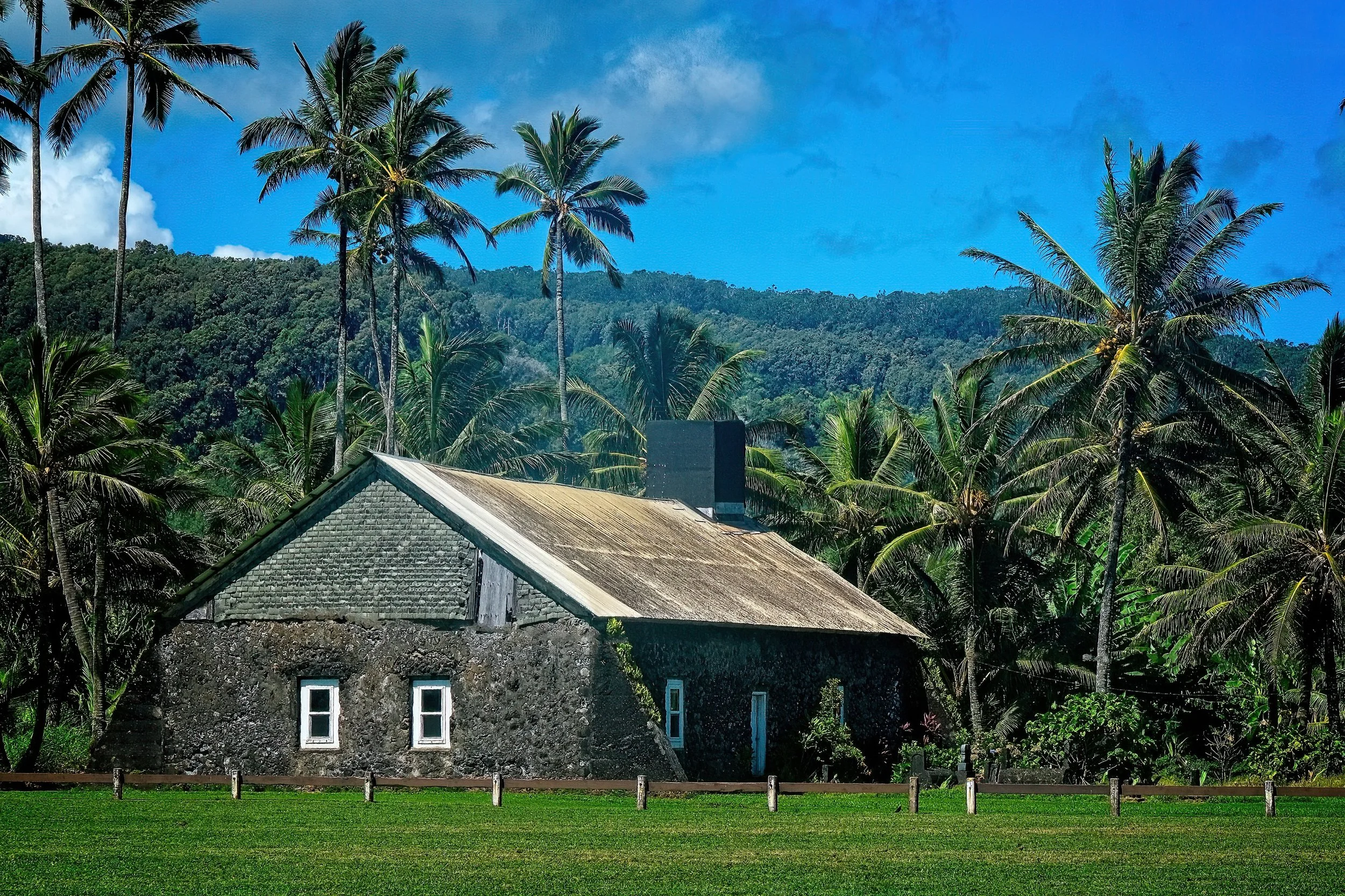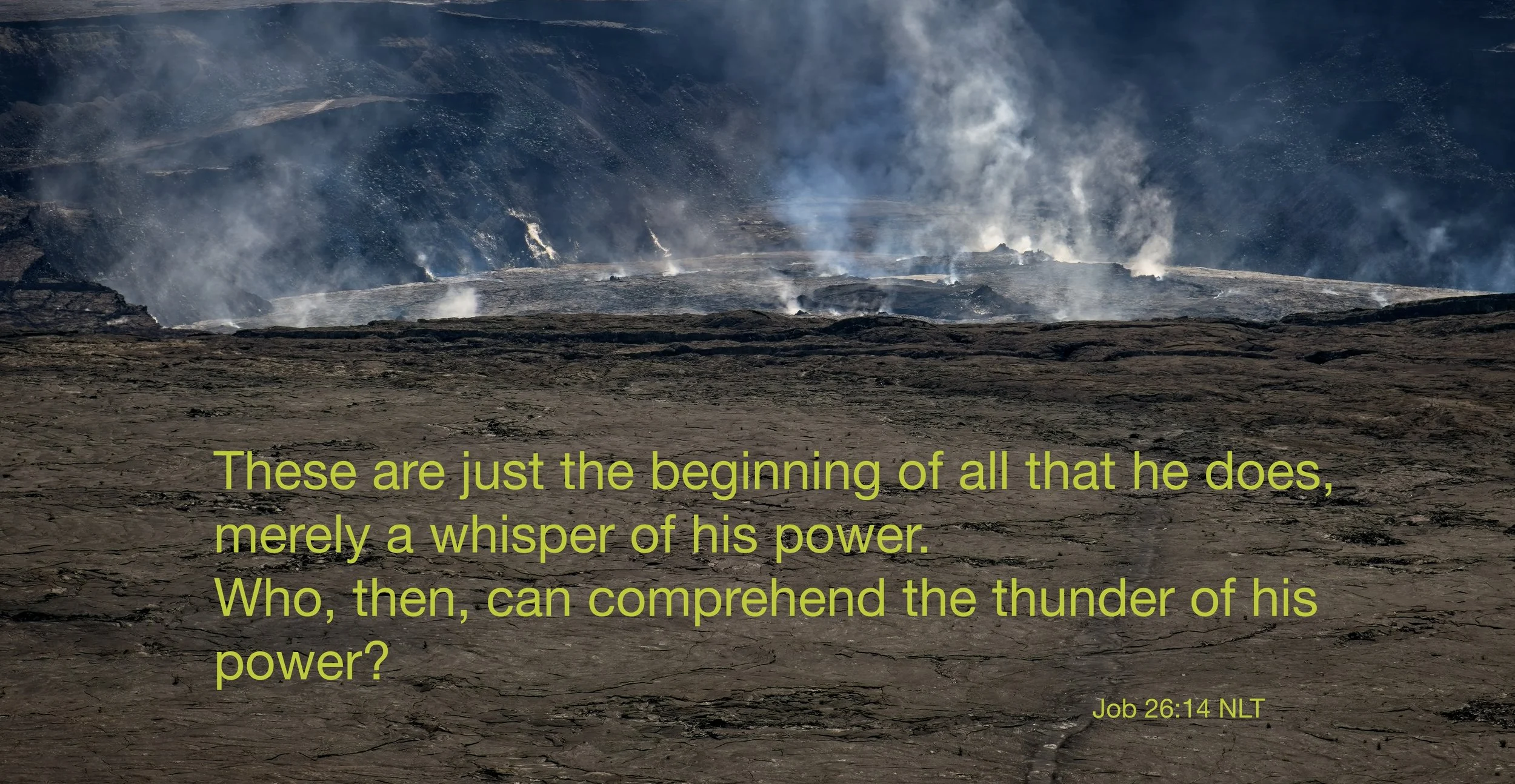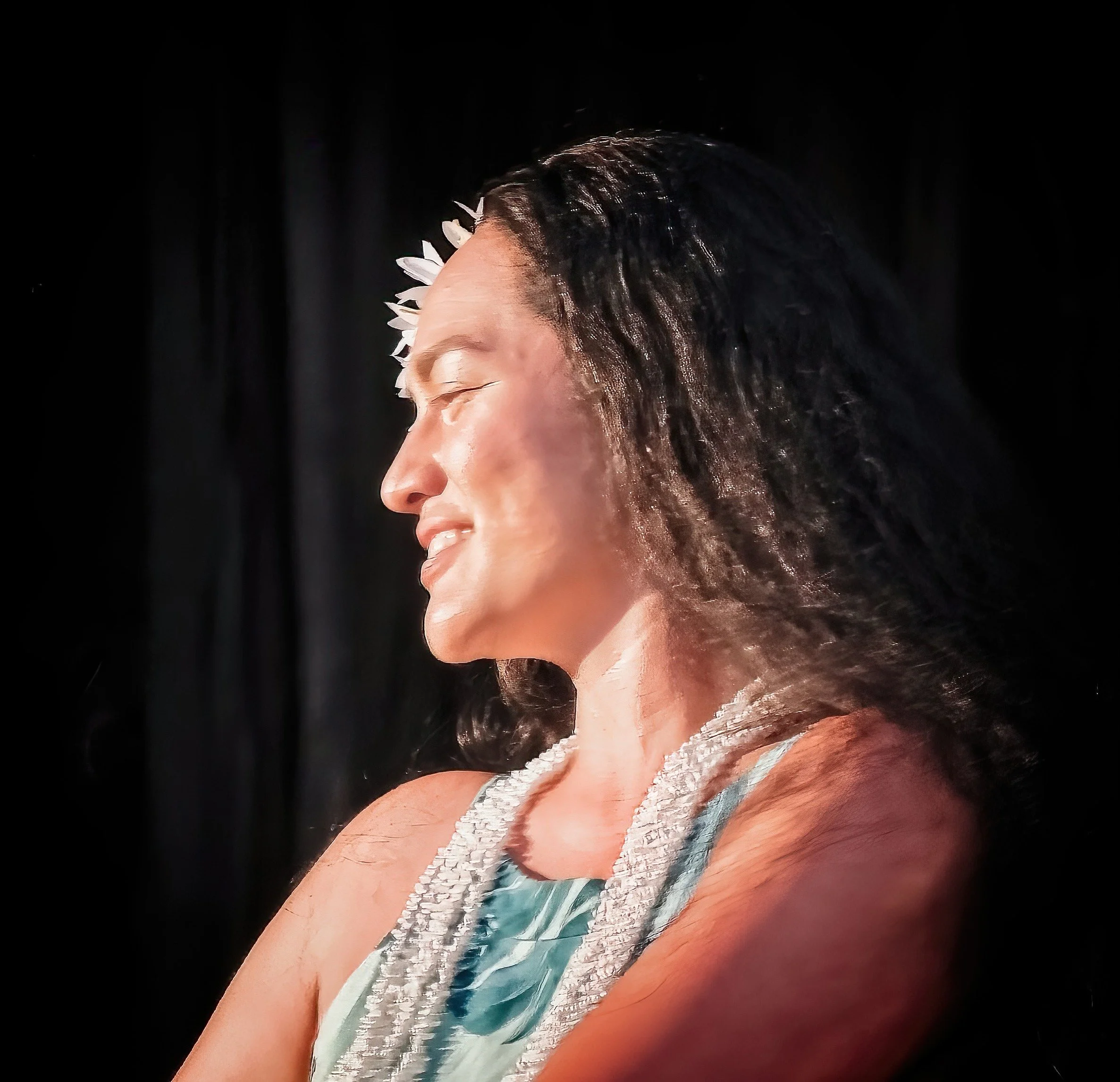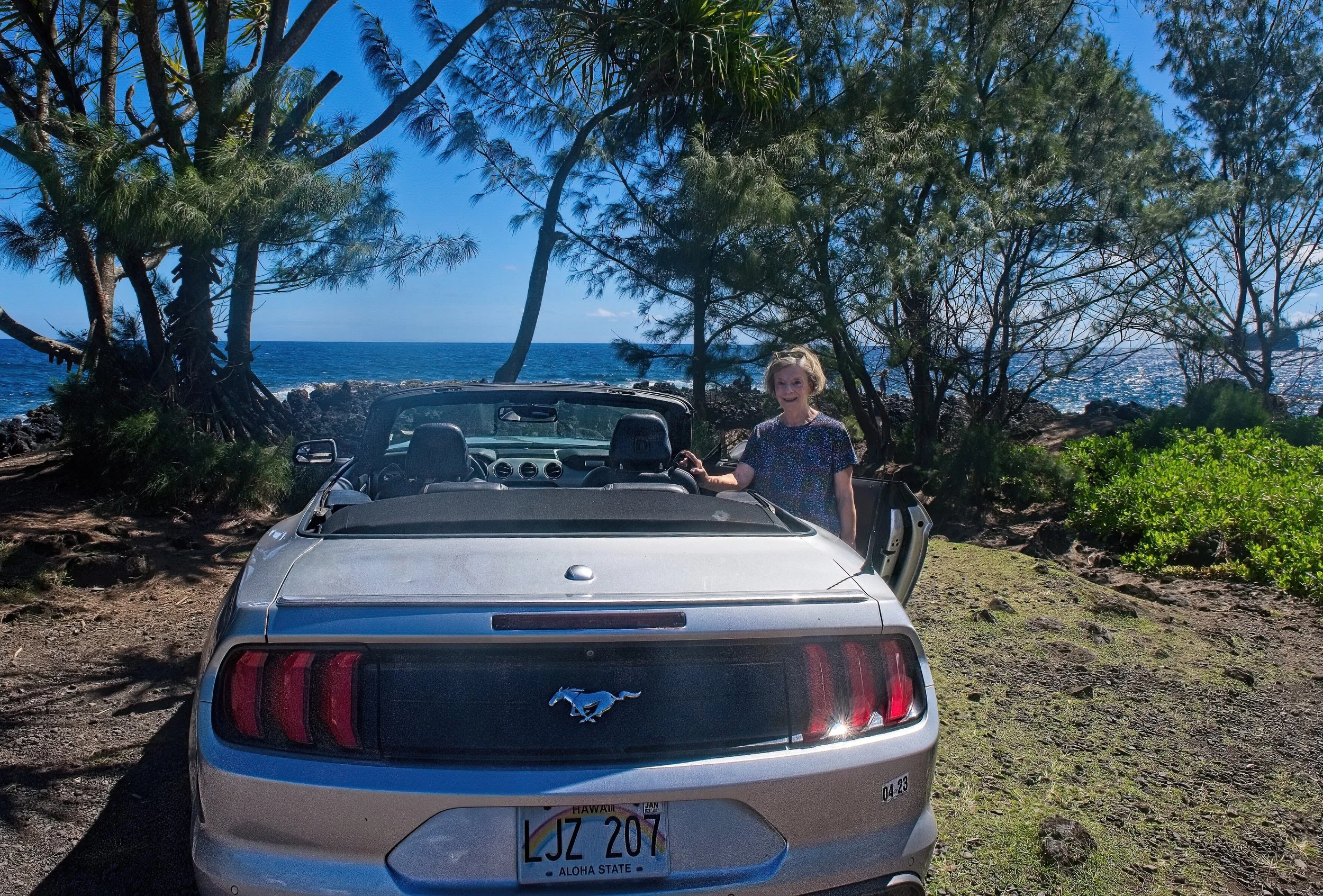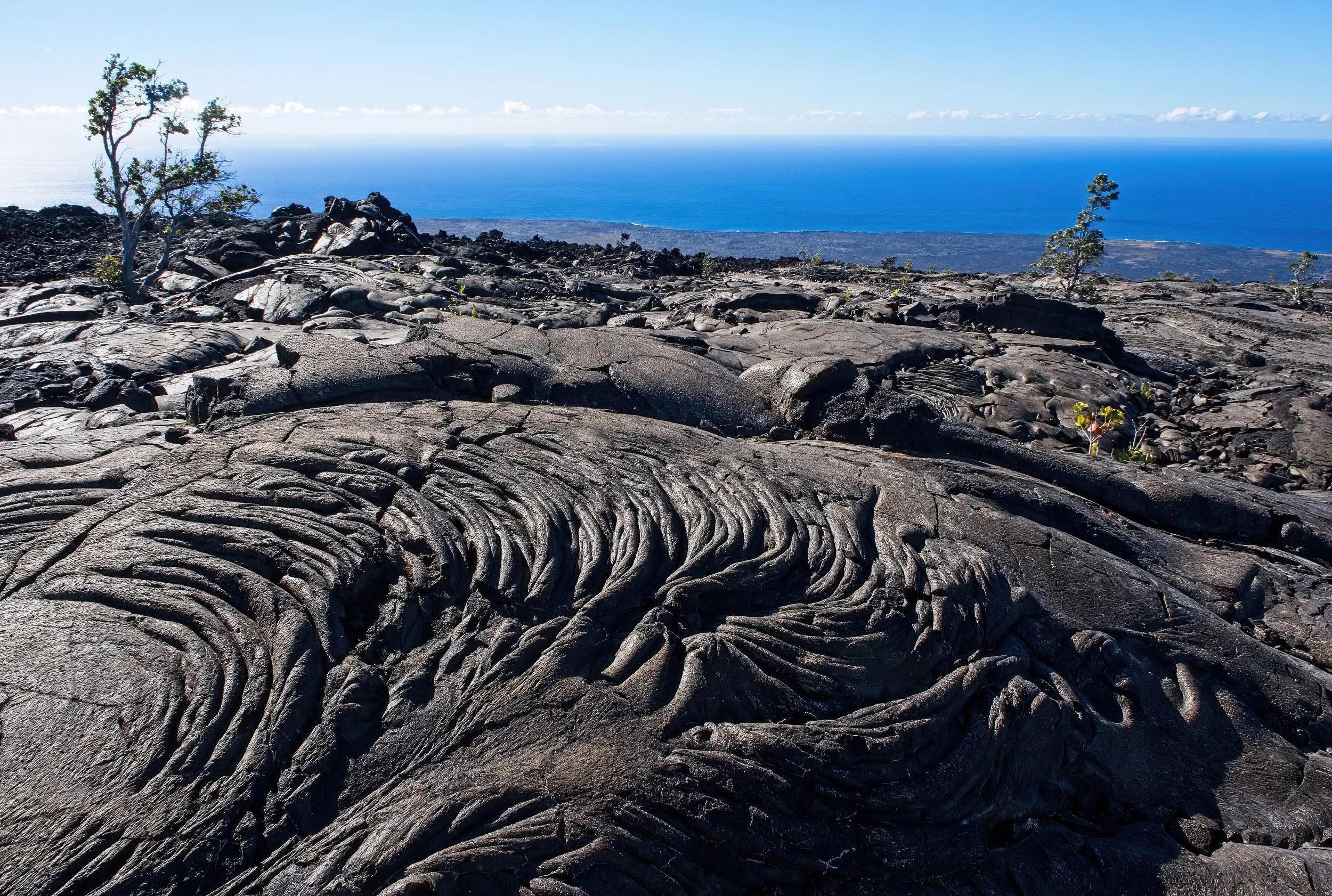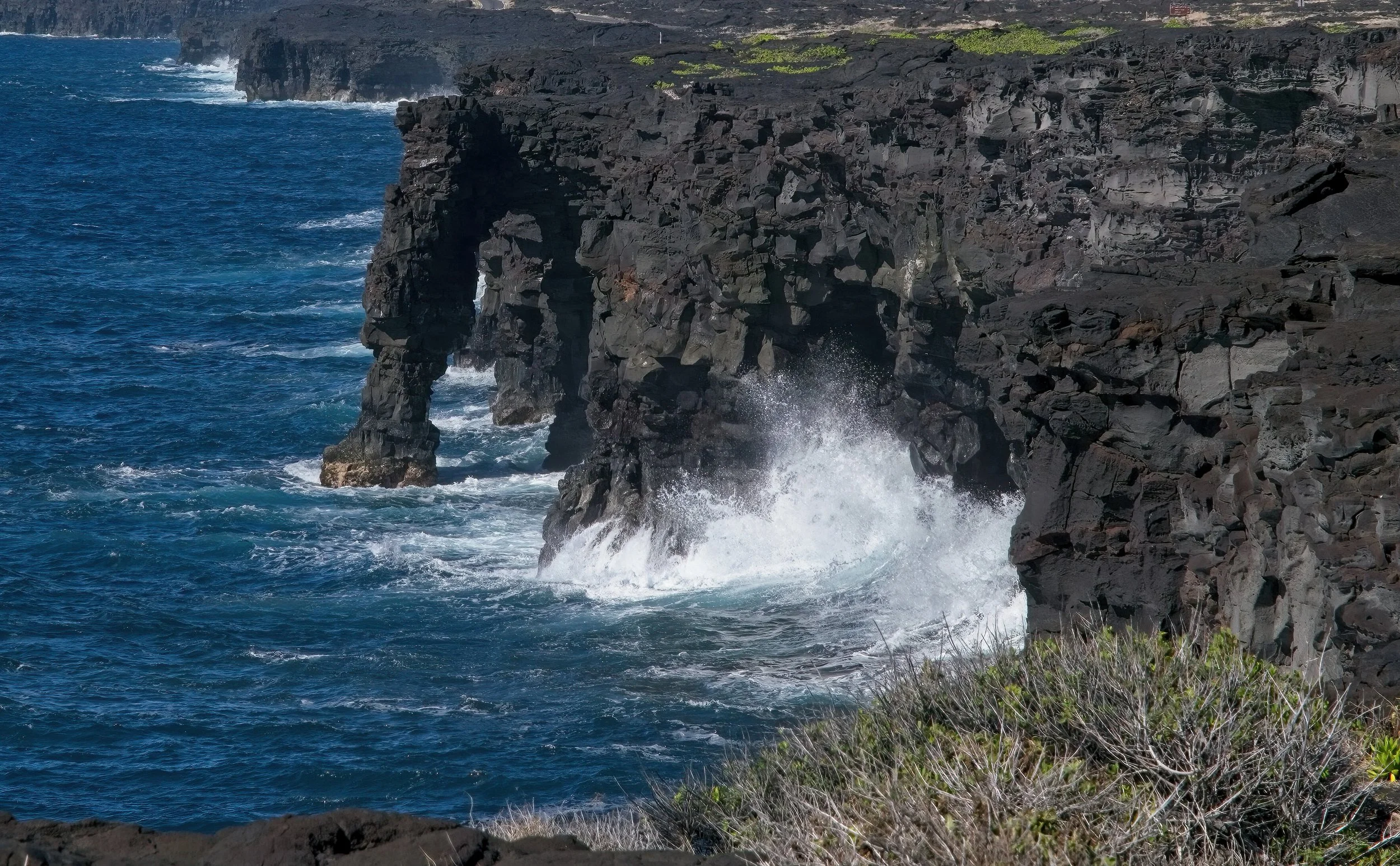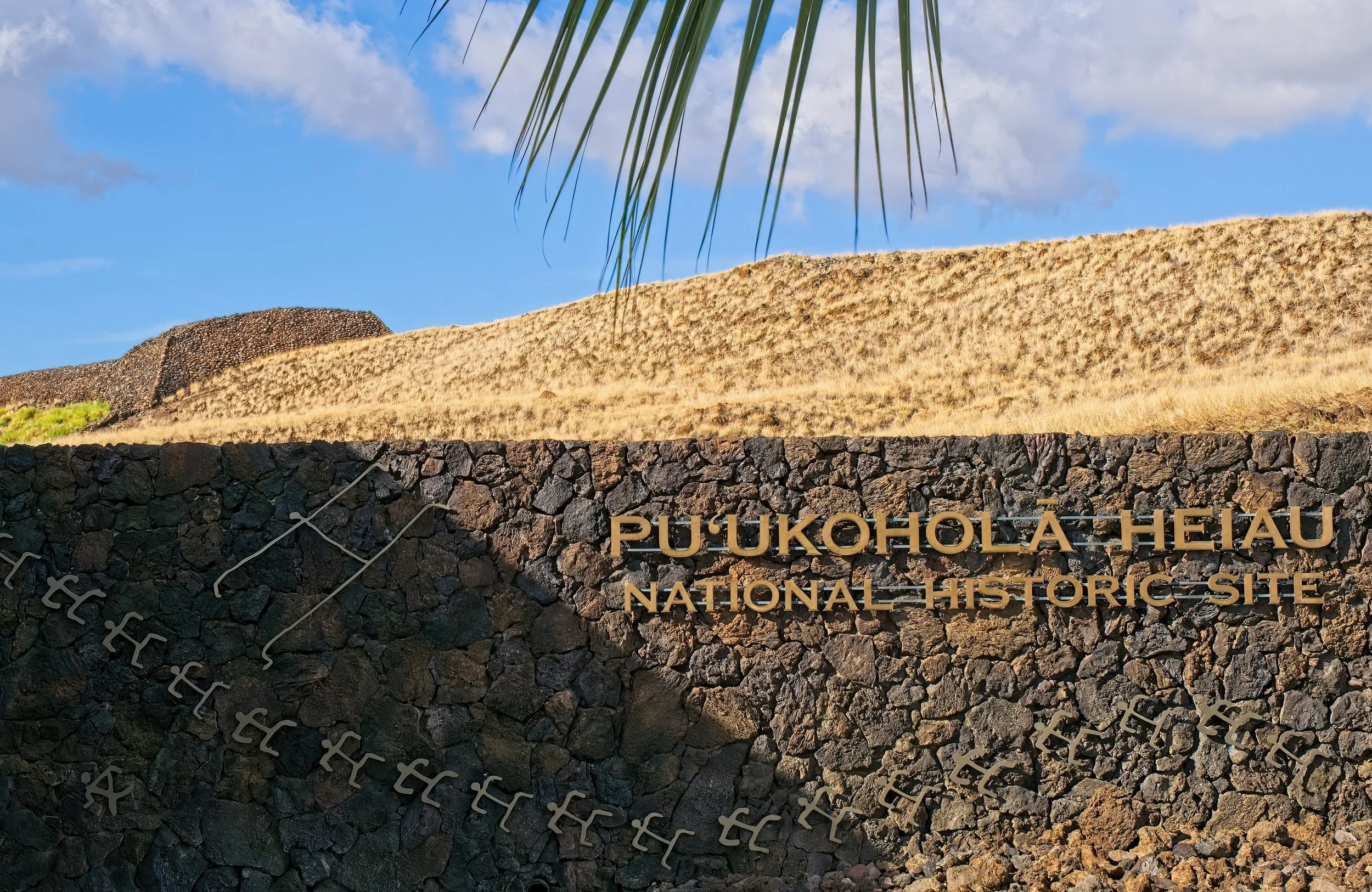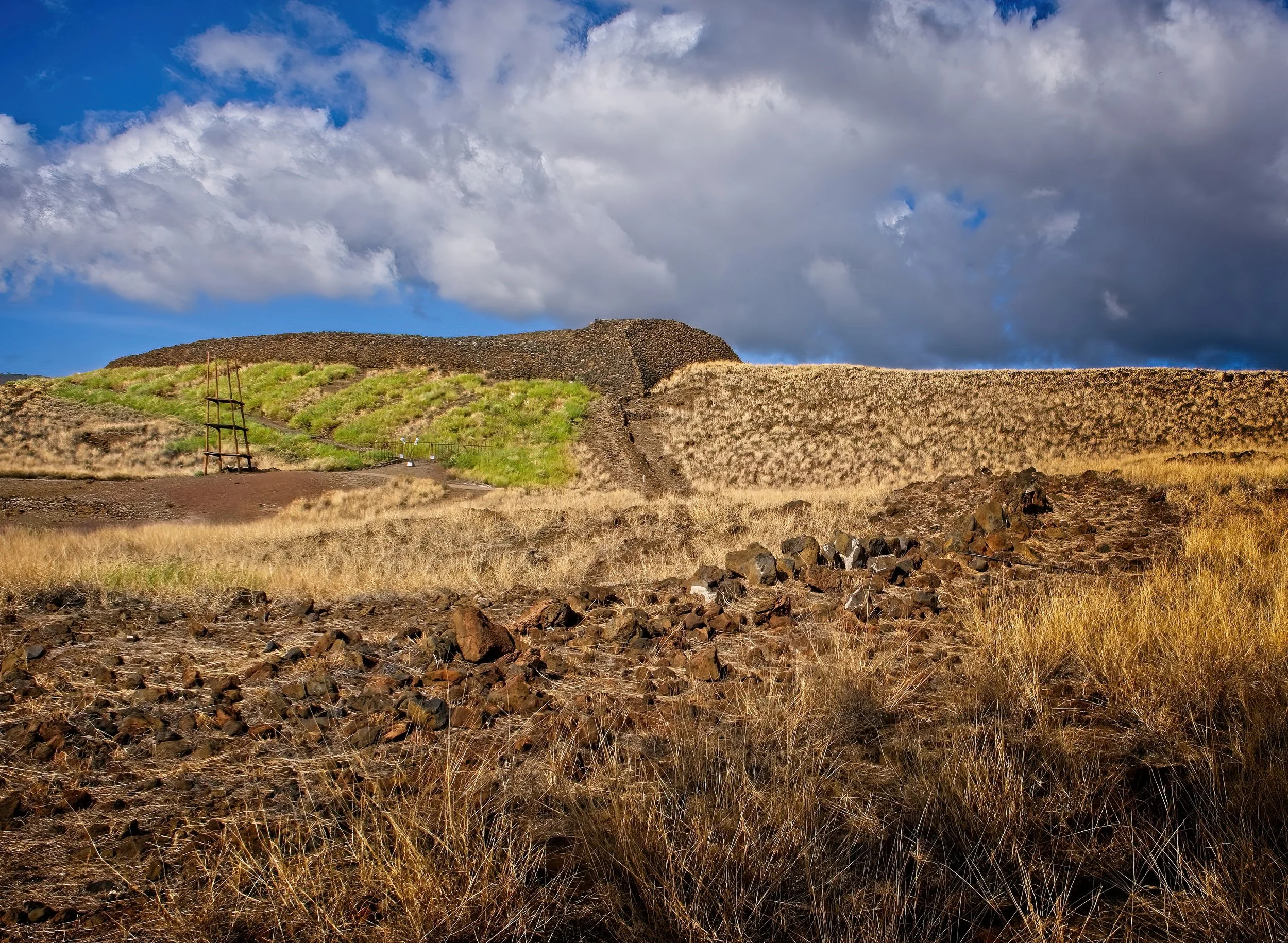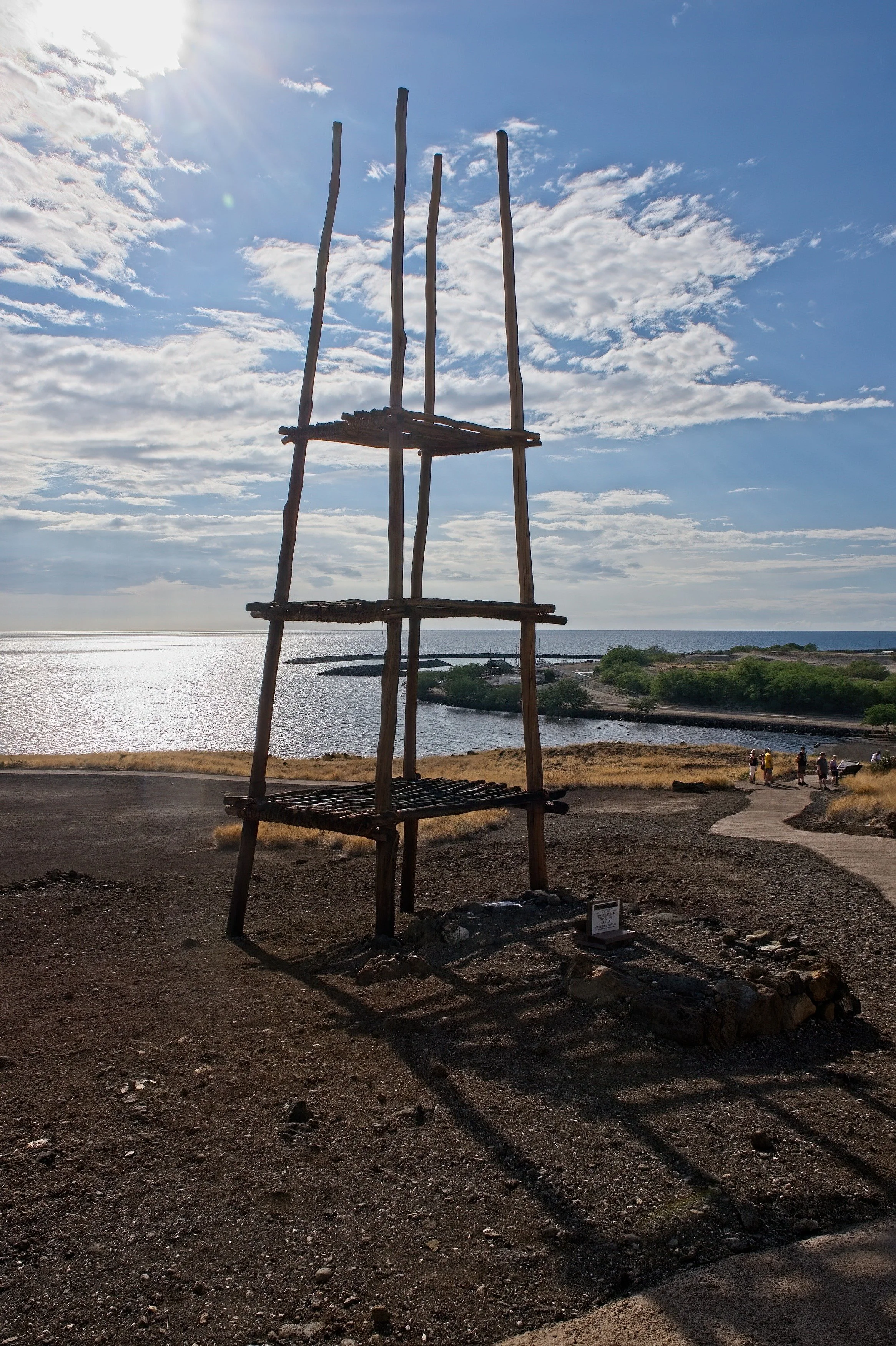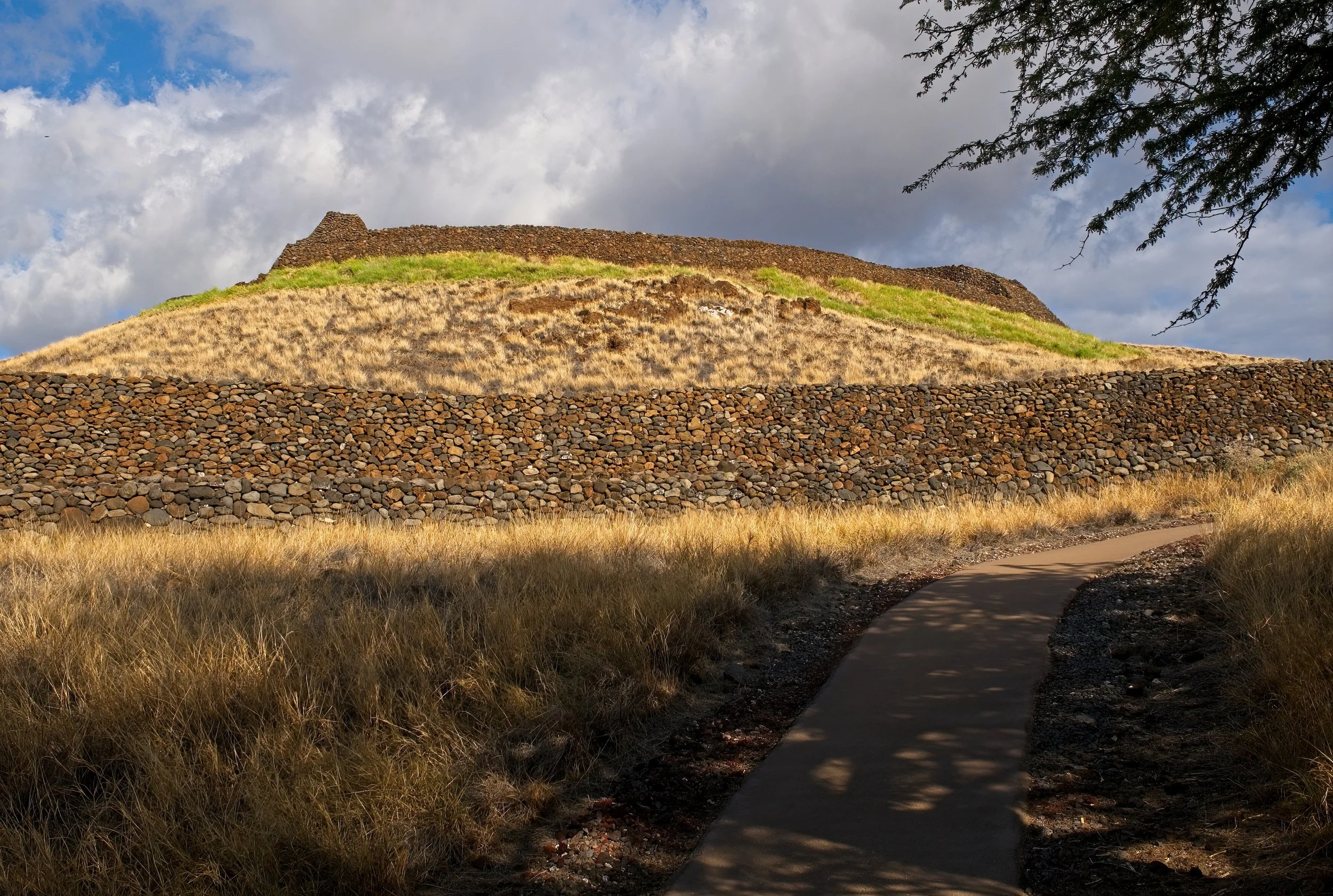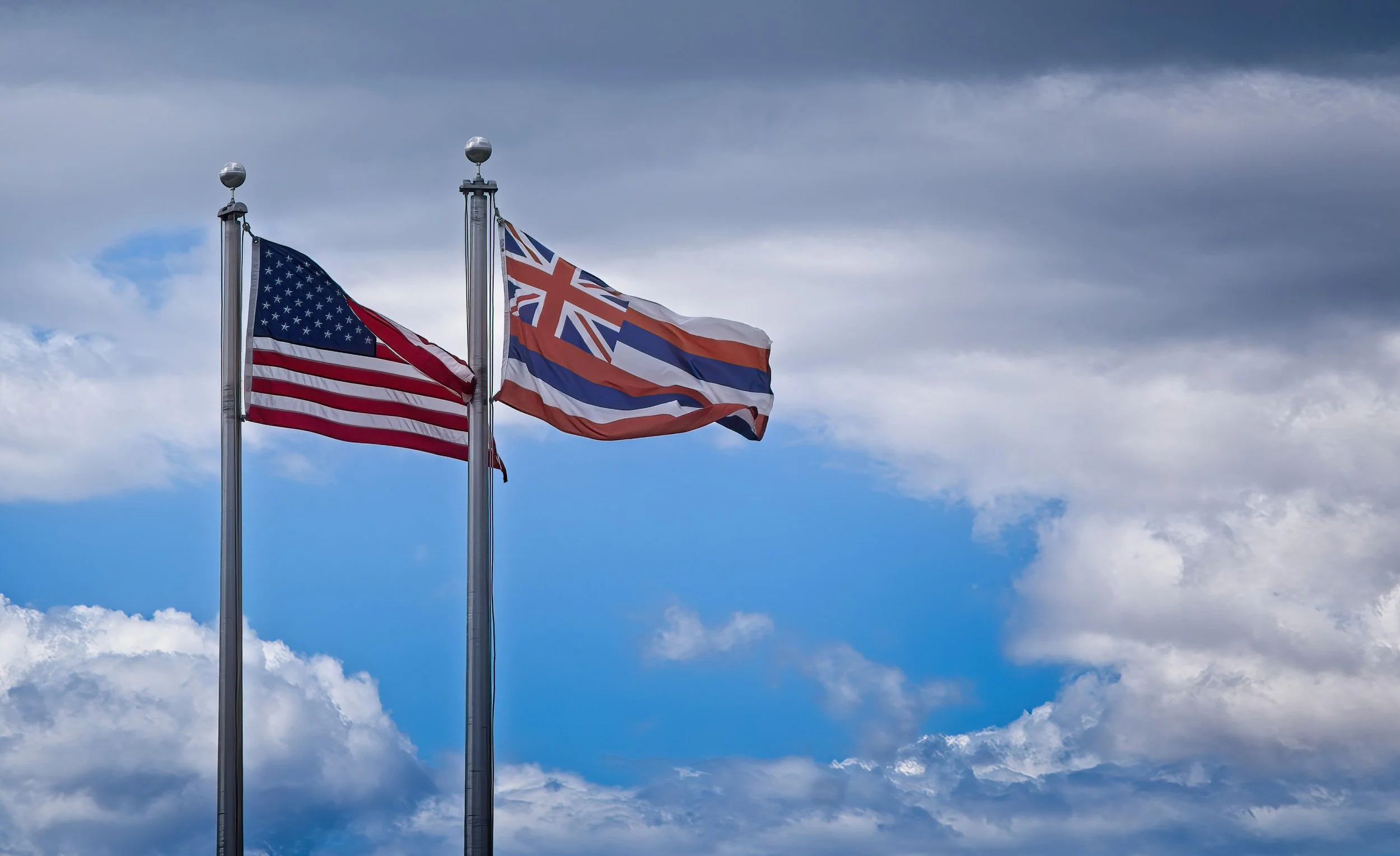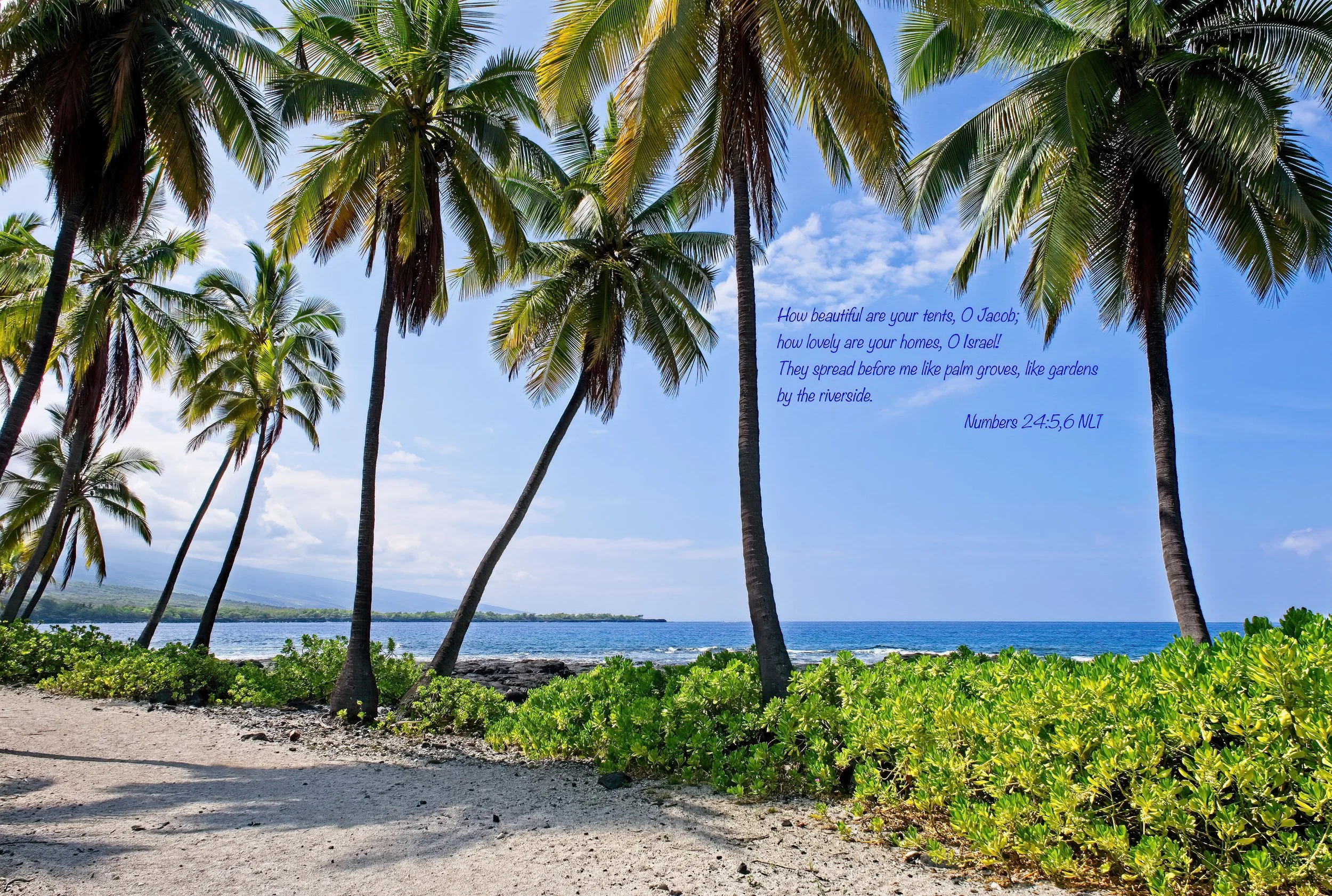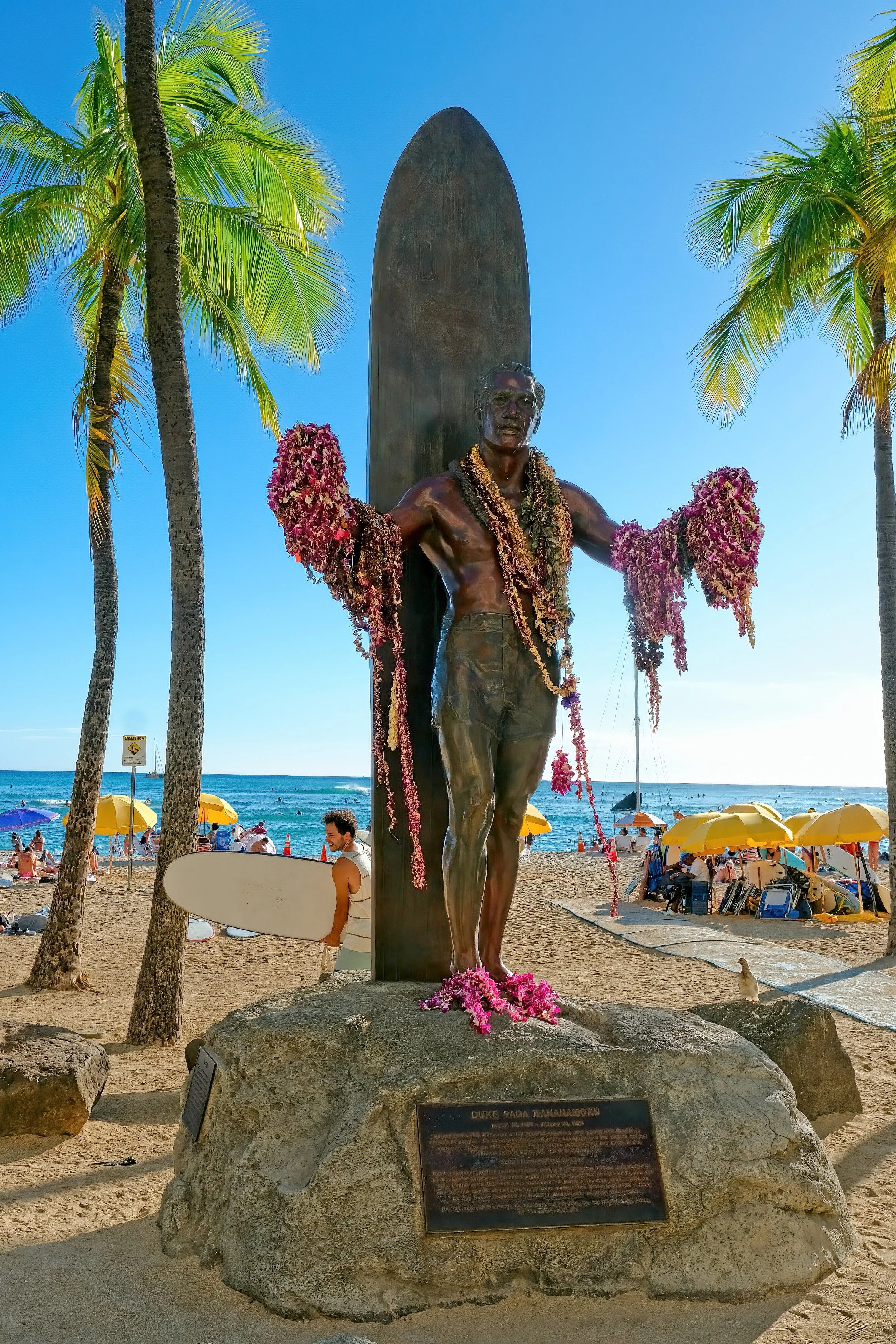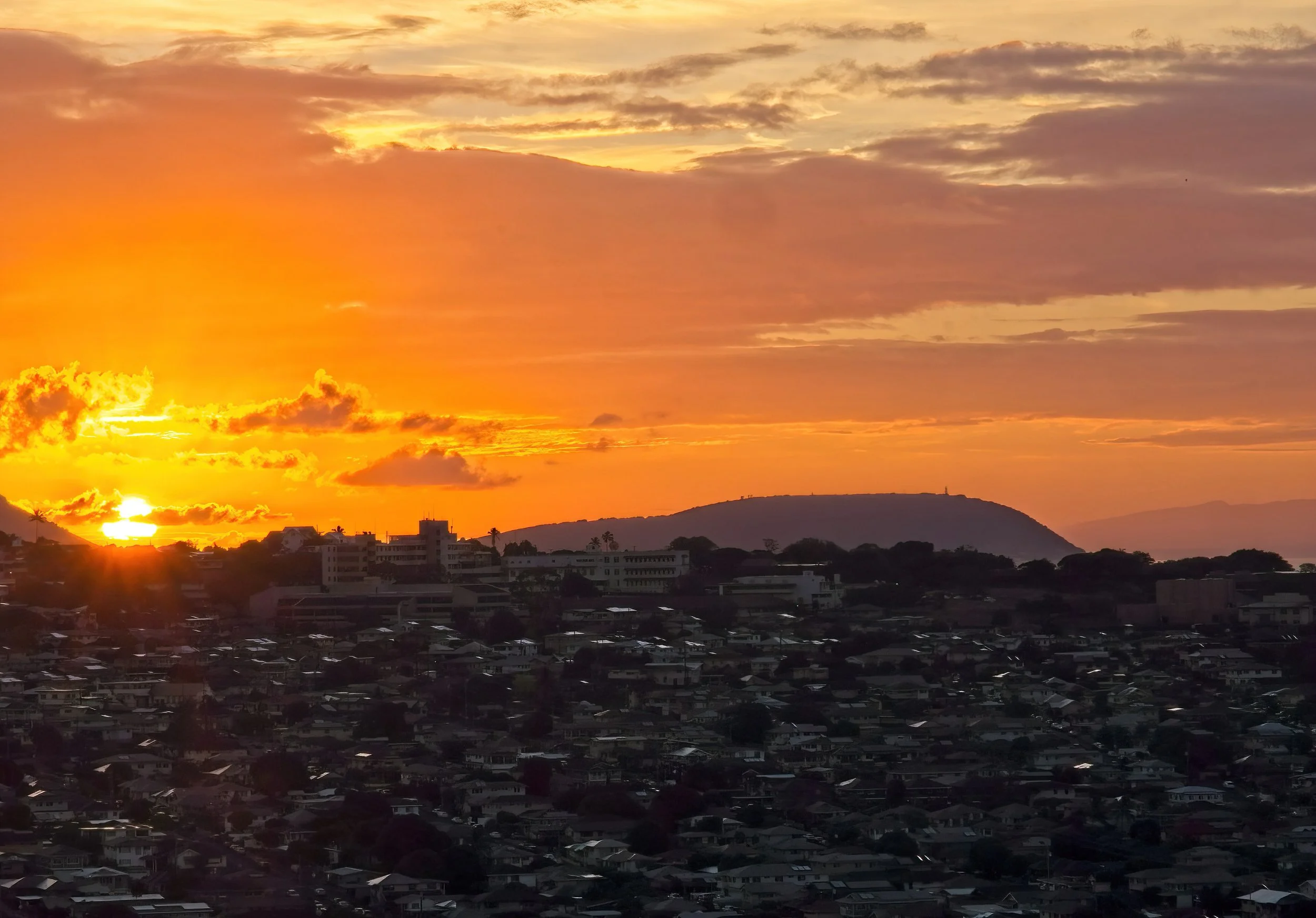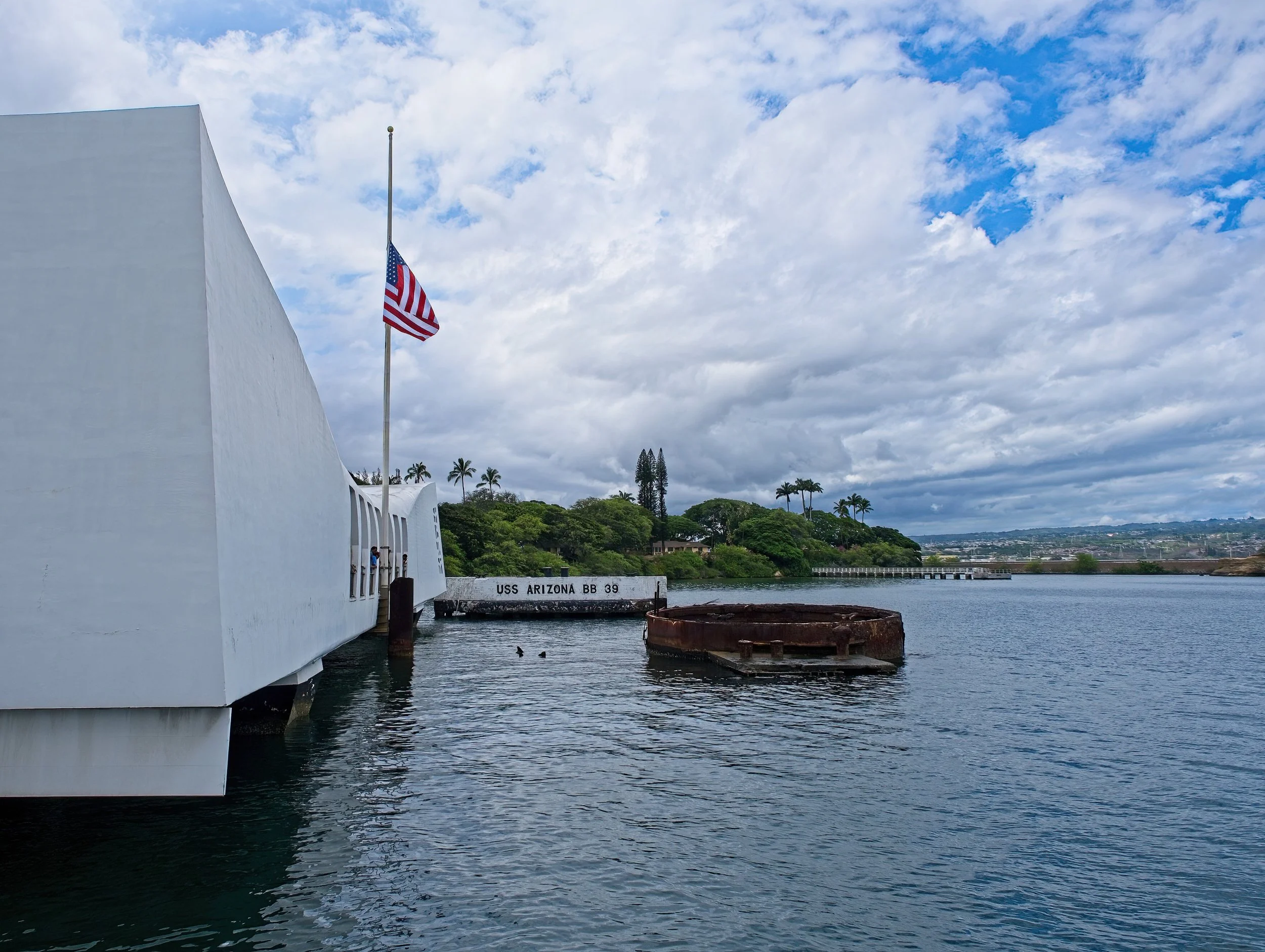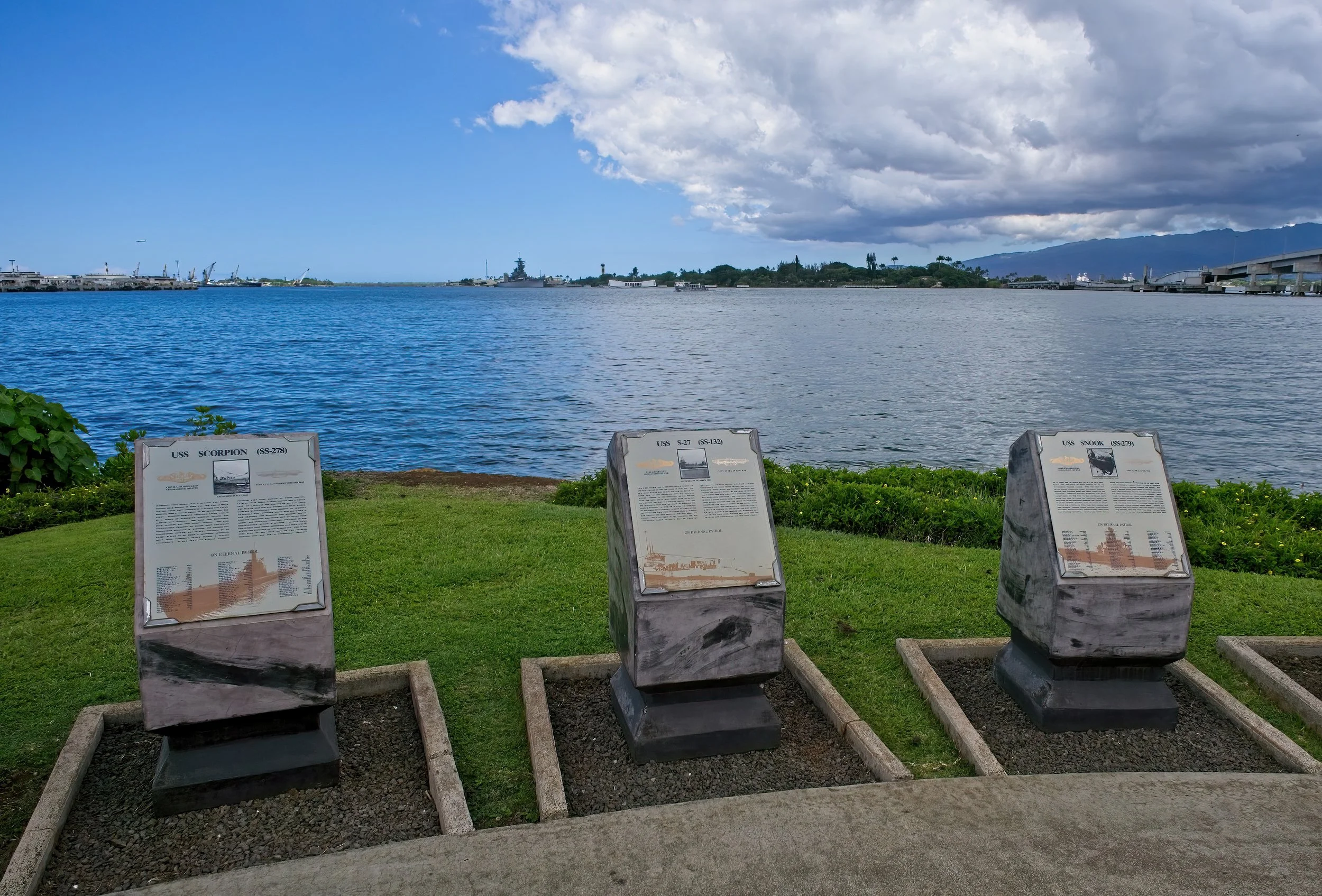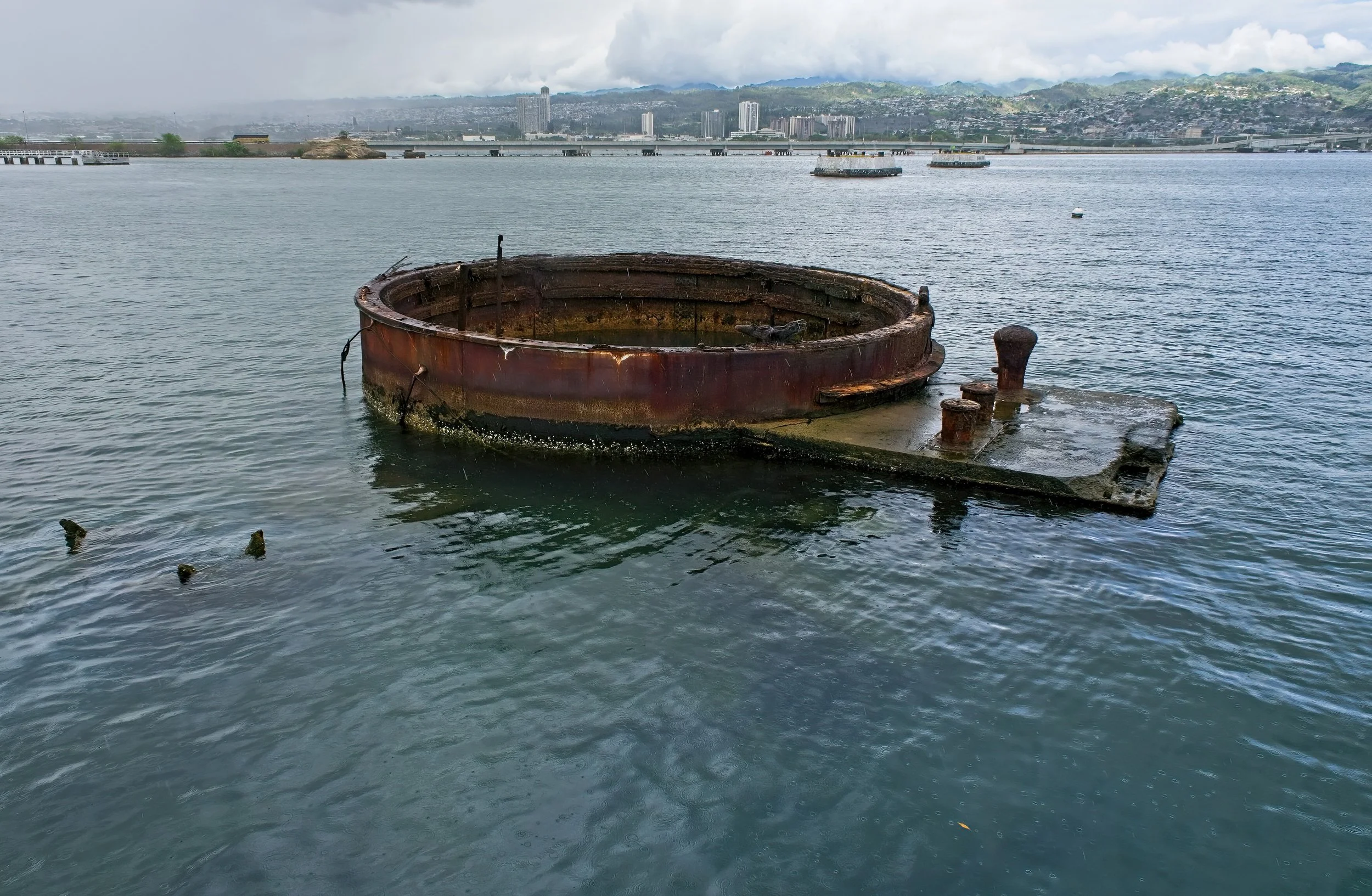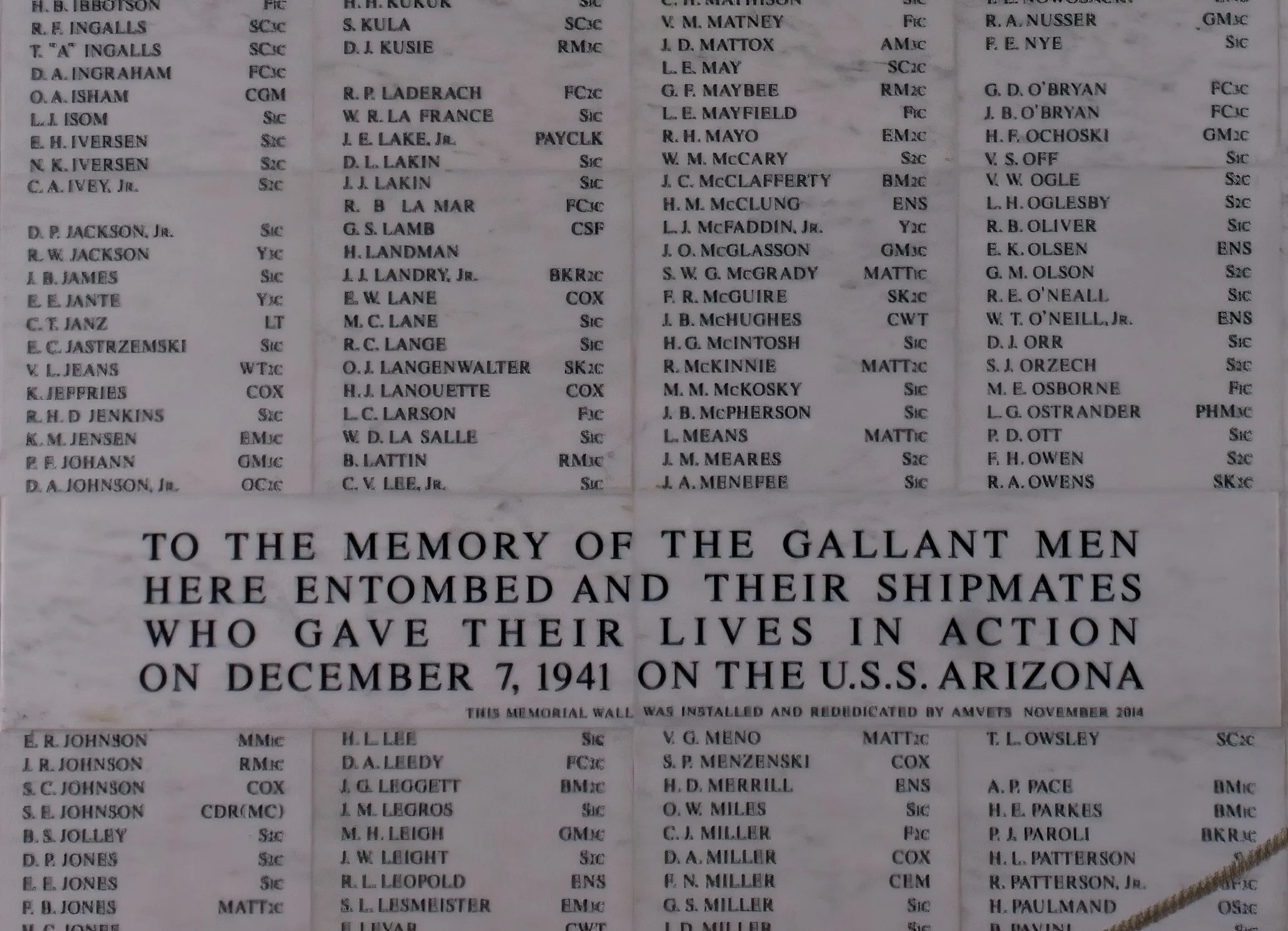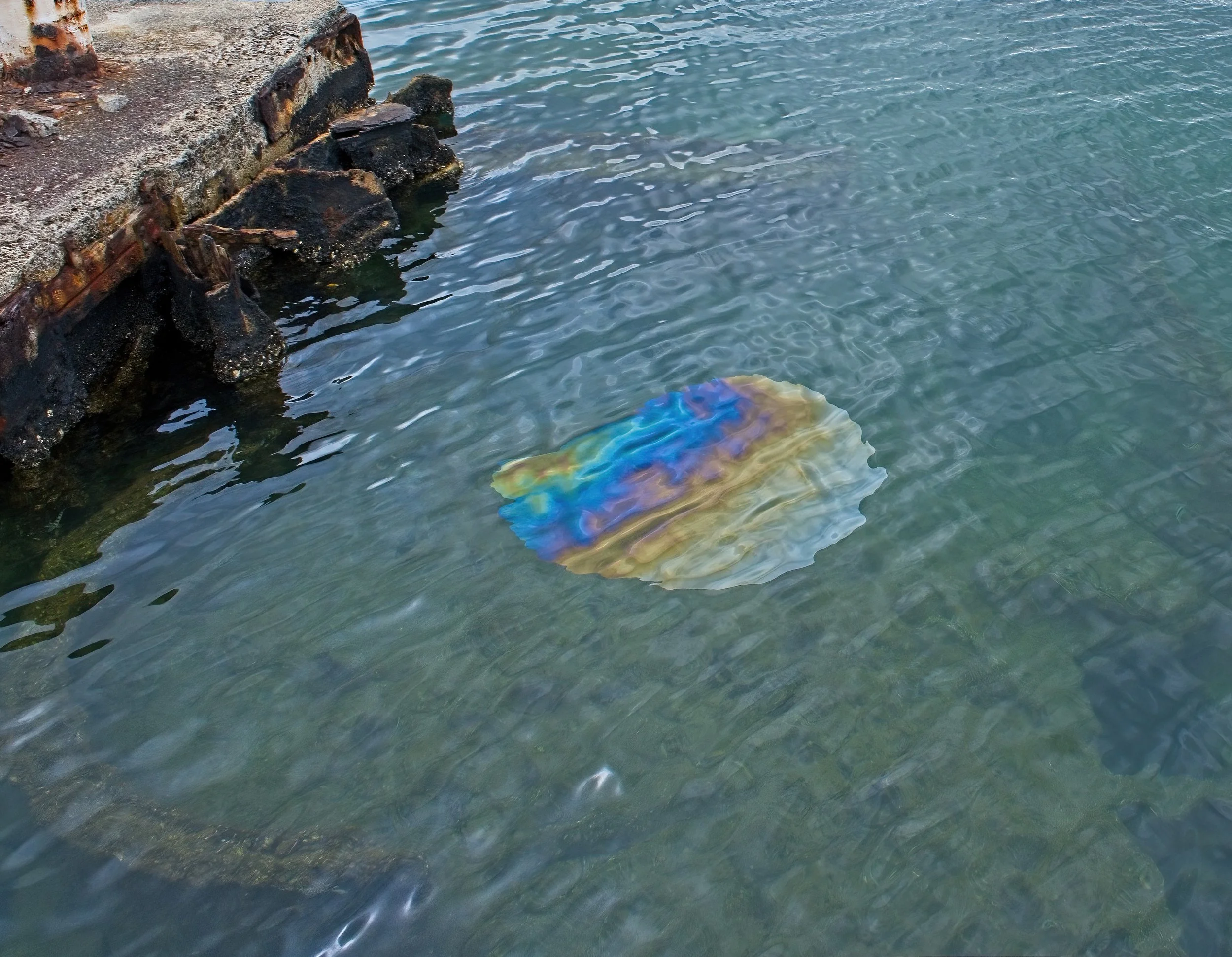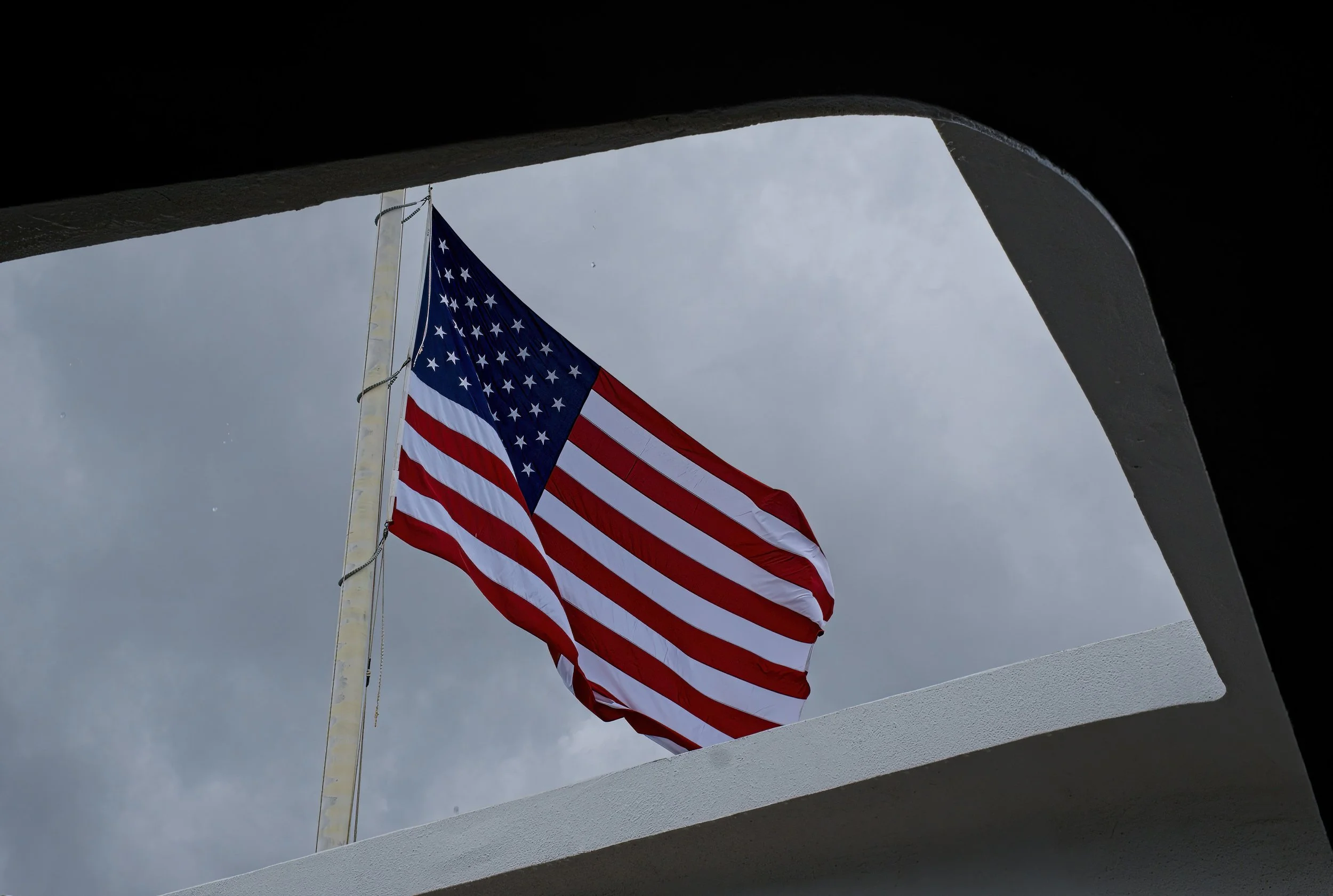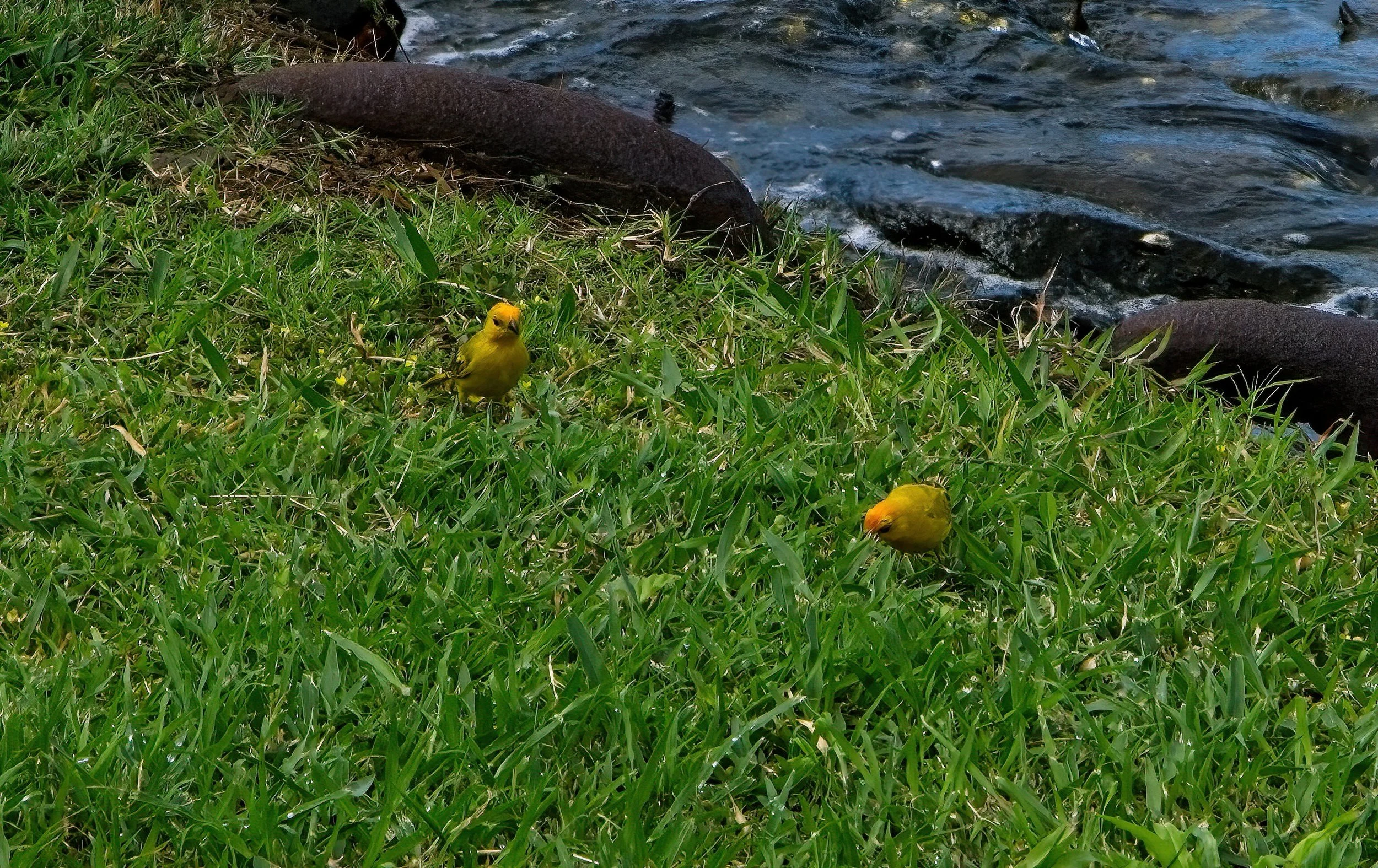Kona the coffee. We stayed on a Coffee Plantation in the nice apartment over the large garage on the Big Island. It was a great location and we were nestled in among more than 100 coffee trees on the side of the mountain overlooking the town of Kailua-Kona. This area did not match my expectations of a coffee plantation but it is typical for the area with scores of people growing small acreage of coffee trees. Our host’s trees produce about 7500 pounds of coffee each year. We enjoyed the local beans he produced with the free coffee provided with the rental. We did not bring any home because he does not sell his coffee retail and the pure Kona coffee on the island was between 65 and 90 a pound. We enjoyed our morning coffee and an occasional cup in a coffee shop.
Uncomfortable /
This is a view of the famous Waipio Valley and it’s black sand beach. This valley is special to the Hawaiian native culture and the place where King Kamehameha - who united the islands in a single kingdom, was secretly buried. The road down from the overlook is extremely steep and regular automobiles are not permitted. The day we were here no one was permitted to drive or walk to the beach. There is an ongoing rather recent protest about the valley and those who want it closed occupy the area around the overlook and make it difficult to visit by taking most of the parking spaces with their cars, canopies, signs, road blocks and their presence standing on the road. We parked at one of the few spaces open a few dozen yards from the protest area and walked. The protesters basically ingored us and the other 4 or 5 people trying for a view. Yet they let you know they would rather you were not here. The police had just left when we arrived and I think they are checking on access since the court ruled the protest could not just completely shut the viewing area down and did allow a handful of people access to the beach, with permits. That did not include tourists like us. Still we got to see a glimpse and, depending on the courts final rulings, that may not happen in the future.
Chocolate! /
What a treat we found on the road to Hilo on the Big Island. We went north of the main road at a town called Honokaa to get a glimpse of the Waipio Valley (get to that tomorrow on TLT). We stopped in town to get an image of two of the interesting old buildings and saw an advert for a chocolate company with a tour and a tasting time. Sweet! So we went. It was a short distance from town but felt otherworldly with the deep foliage surrounding the tiny farm and its four small scale buildings. The company is on an old 5 acre farm and without the bright red sign would be very easy to miss. It is not Hershey’s “let’s build a whole village and a massive factory” kind of place. The company is called Honokaa Chocolate Company and the claim to fame is that they grow a lot of the beans they use right here. I think they mentioned another field or two not on the original acreage. So grown in Hawaii and made in Hawaii. Neat. And they do it well. We enjoyed a tasting of three kinds, though they make more varieties, and learned a bit about process and production. Again quite a contrast to Chocolate World. An owner, Mike, was passionate and knowledgeable and gave us a good overview of their products and the growing of the cacao trees. A serendipitous stop and, yes, we bought some souvenirs!
You can learn more about the Honokaa Chocolate here: https://honokaachocolateco.com
Mike explaining what we were about to taste.
Recently planted trees.
More mature plants near the gate
Honokaa also makes very small batch infused chocolate
This is one of the aging barrels with a Hawaiian product
Don’t forget a bit to take home.
The gate to a cool chocolate adventure
Delicate Beauty /
Found outside our room at Kona.
Early Church /
In the tiny community of Keanea on the road to Hana is this beautiful old stone Congregational Church, the Lanakila Ihiihi O Iehova Ona Kaua Church, built in the 1860’s. It is still used for worship and some community events. It is across a ball field from a place to park along the ocean and there were no trespassing signs up so this is as close as I was able to get. I did note a fundraiser scheduled to help repair the building. This is the only structure to survive the devastating tsunami of April 1, 1946.
Kaloko-Honokōhau National Historical Park (NPS #322 Two Lane Touring) /
I was disappointed with my photography at this park. I got there early one day and conditions were great. Photographed the turtle, super, shot the “forbidden sign, fine and then I got distracted by several birds. They were just a bit too far for my lens to get the sharpness and the size I needed but I knew that they were new birds and so I just kept shooting walking down the beach past great scenery and taking photos of these birds. A lot of photos. t thought I would come back here it was a quick trip from our rental and we did late one evening. Yet, I missed a lot and ended with a few good shots and lots of barely visible birds. Lots.
Kaloko-Honokōhau was a village unlike the last two posted parks that were associated with the kings. These were fisherman, farmers, canoe makers, families, & warriors. They lived in a village along the shore that had a bit of fresh water and that sustained them here. Archeological work is ongoing at several sites. One of the very interesting parts of the park were the fish ponds they built. Both in the shallows and in two bays. Here they captured and carefully managed lots of fish for their main diet. Two smaller ones are in the sunset photo and the massive bay one is contained by a huge lava rock dam.
This shows the village main cove and barely visible on the right is the canoe hut.
A large green turtle. I was so focused on a bird I almost stepped on him. I was the only one on the beach at that point of the morning.
Kapu was a whole system of laws that governed life in Hawaii. Here it just means do not climb on the ancient wall.
This massive dam enclosed the largest fish pond.
Gorgeous soft breeze night. You can see two of the smaller fish ponds.
Awe and Wonder /
The photo was taken at Volcanoes National Park in Hawaii
Hulu /
The Hulu dance is an interpretation of an event or an emotion but usually they are connected. We watched a performance on our first night in Waikiki near the Duke statue. There were three musicians and two dancers and we were told how each dance explained or enhanced the telling of the event. This woman just finished a dance with the setting sun adding a glow to her.
Mustang Cindy (apologies to Wilson Pickett) /
Mustang Cindy, think you better slow your mustang down
Mustang Cindy, think you better slow your mustang down
You been running all over Maui now
Oh! I guess I'll have to hang the lei back on your neck
All you want to do is ride around Cindy, ride, Cindy, ride
We upgraded the Kia rental car in Maui for a reasonable price and enjoyed the car especially on the road to Hana and the early morning trek up Haleakala for sunrise. It was also pleasant each evening to enjoy the tropical sounds and smells. Good decision.
Lava Landscape /
This was a hot hike, no shade at all and the black lava radiated heat from the sun even though we were on the trail by 10:15. It is an eerie kind of hike with scrubby vegetation - this was a lava flow in 1996, I believe. Yet the ocean is visible along most of the trail. Part of Volcanoes National Park.
We Try Harder /
We try harder was the mid 60’s slogan of the number two car rental company. I think the folks that rent the surf boards motto might be “We’re Here.” No ties, no coats, no nametags, and likely no shoes in this laid back space. Pretty clear what the product is in the relaxed, sun washed beach front rentals. However they are convienient for folks and they seemed to be busy most of the time. There were stands like this up and down the beach on Waikiki.
Sea Arch /
This sea arch is on the ocean side of Volcanoes National Park. The trail is at the end of the 19 mile drive on the east rim drive past the VC for the park. We arrived very early in the day to do three hikes before it got too hot and this was the goal of the first one. We were told more than half the arch collapsed in a recent storm and this one may not last much longer.
Pu'ukohola Heiau National Historic Site (NP #321 Two Lane Touring) /
This is a most intriguing site and one of our favorites in the Hawaiian islands. It seems King Kamehameha’s ambition was to unite all the Hawaiian islands. At the time he was the ruler of 1/3 of the Big Island, or Hawaii. As part of his plan, he built a temple. The temple is made of a huge stone base, about 30 feet high, 100 wide and more than 220 feet long that would support many smaller, light, thatched roofed structures. The whole base is made with no mortar. He added a difficulty by demanding that all the stones were smooth and the only place under his control where there were sufficient smooth stones was 20 miles away across a mountain over 7000 feet tall on the opposite coast. So he lined up thousands of warriors shoulder to shoulder and they passed stones hand to hand for a year. If you dropped one it was carried back to the starting point. A priest on site determined where each stone was placed. This is revered geography in Hawaiian culture and marks the beginning of the Kingdom of Hawaii.
Offerings were placed here.
The stone base in the foreground was a fort where cannon were placed.
One of four spots in Hawaii where the Kingdom of Hawaii’s flag can be officially flown.
From the Hawaiian Coast /
Duke Kahanamoku /
This is the famous Duke statue on the beach at Waikiki. It is to the man who, among many accomplishments, introduced the world to surfing. He was an Olympic Gold Medal winner multiple times, he saved several fishermen using his surf board - now standard equipment in lifeguard stations and much more. See https://www.discover-hawaii.com/oahu/articles/duke-kahanamoku-the-man-behind-the-statue-on-waikiki_490/
The statue is often thronged with people and draped with leis. I tried to capture it with a surfer in the frame as well as on the water.
Wild /
Who knew that wild goats were an issue in Hawaii, or at least they are on the Big Island. We saw quite a few in our five days here. This was the first group, a family of four working their way down the old lava flow toward the sea. Mom watched the “kids.” Dad watched us. There are so many in this area near HOnaunau Park that they have built a fence to keep them out of some parts and gave away - no idea to whom or how, sorry I should not butt in like that:) - 400 goats last spring. The ranger said that they estimate about 300 births since then, so not much headway in goat control.
Puʻuhonua o Hōnaunau National Historical Park (NP #320 Two Lane Touring) /
The visit to this park was fascinating. It was the site of the ruling family of the island of Hawaii (or a portion of it) for generations. The structure surrounded by tiki poles and a fence was the burial site of kings, at least 23 were buried here dating from about 1450 to 1818. The lava rock wall beside it was the base for a massive temple and the long wall, about a mile more, enclosed a “city of refuge” where people who broke a Kapu or a warrior defeated in battle could flee here and be absolved by a priest of their death sentence. Of course they had to make it here pursued by those who did not want them set free. There were royal fish ponds, a boat house and many more unrestored sites on the property. The VC had an excellent movie about one man’s journey to freedom. The grounds and the cove were so pretty and we just loved being here. We also hiked about a one mile trail to a cliff overlook. We passed other foundations, saw several Konane carved into the lava https://en.wikipedia.org/wiki/Kōnane) and our first wild goats.
This is Kōnane, similar to the Japanese game of Go. The board could be any size with lava and coral pieces. These were high stakes games with much being bet on individual moves.
A small portion of the huge rock wall, 10 feet tall, 15 feet deep and no cement. Enclosed the city of refuge.
The boat house for repair or building a new canoe.
Good Morning Sunshine /
I took this at great personal risk - i could have spilled my coffee, standing on our balcony and looking east from Waikiki Beach on Oahu.
World War II, Valor in the Pacific, Pearl Harbor Unit (NP #319 Two Lane Touring) /
This was a long anticipated visit. Pearl Harbor did not disappoint even with high expectations. We visited the area the day after arrival in Oahu. We took a city bus from our hotel to the National Park. While it took an hour, it was only 1.25 each way and the tours from the hotel started at $45 each, very frugal:). Plus we could stay as long as we wished. You must make a reservation for the boat to the Arizona Memorial and we were scheduled for 1:00 so we arrived on site about 10:30. We had to check our backpacks as no bags are permitted on the site.
First we toured the submarine Bowfin. (I wrote about that boat on September 17th.) We also enjoyed the submarine museum and the memorial to all the US subs lost at sea. Moving spot. There are a few buildings associated with the VC here, including one museum for the War in the Pacific and one on the attack on the military in Oahu including Pearl Harbor. They were well presented. Cindy and I were both surprised by the number of military units attacked before the primary attack on the ships. There were also some great stories about the civilians associated with the bases. We then moved to a third building where we were given some instructions on protocol for the ride to and while on the Arizona Memorial. This portion was run by the Navy and the NPS. Because of the restrictions photos were difficult to take of the whole memorial. You were not permitted to take them from the boat, the dock or the ramp, only on the memorial itself. I got one brief shot of the side of the structure and the flag at half mast with the permission of the ranger on the ramp. One.
The actual memorial is simple with a mostly open top and sides and a list of the service men, nearly 1200, who died on the Arizona and are interred here. The marble wall of names took up one end of the mmemorial. There are a couple plaques and a small model of the harbor. The bulk of the ship is just visible below the surface with a few small portions out of the water. One spot showed the oil still leaking out of the ship, slowly, now doing so for 81 years. Made it seem somehow more real. You are permitted on the memorial for about 25 minutes and talking is only allowed at a whisper and that is enforced by the ranger on site. It does give a dose of reality to what occurred here, the lost lives and the momentous events that ensued from 12/07/1941.
We were not allowed on Ford Island because we did not get tickets to the USS Missouri or the Aviation Museum. At the present time that is the only way onto the island even though there is a walk and some officers quarters usually open they were not the day we visited.
The forward gun turret, the flag at permeant half mast, the berth platform and the side of the Memorial.
The submarine memorial. There were a couple dozen of these stones each with a list of the men lost and a recap the boat’s service. You can see the Arizona Memorial and the USS Missouri in the distance.
The massive gun turret.
A small portion of the wall of names.
Oil seepage.
The flag is visible in one of the open roof panels.
Birds /
These are two Saffron Finches. They are among the 22 birds I saw that are new to me on this trip. Since Hawaii is not North America they cannot be added to my list of NA birds however, I have now 29 birds in my new Oceania list. I really missed my long lens on this trip for taking photos of birds and I missed a lot of those opportunities. Just did not have the room in the case for it, but if there is a next time!
